Categories
- Argentina
- Chile
- Antarctica
- Easter Island
- Falklands (Malvinas)
- Bolivia
- Peru
- Uruguay
- Paraguay
- Brazil
- Venezuela
- Colombia
- Ecuador
- Galapagos
- Panama
- Costa Rica
- Cuba
- Nicaragua
- Honduras
- El Salvador
- Guatemala
- Belize
- Mexico
- Latin American Xmas
Pages
- Map of South America
- Home Page
- First week in Latin America – October 2009
- Map of Central America
- Contact Us
- The Jesuit Missions in South America
- A week in Buenos Aires
- Street Art of Buenos Aires
Archives
- October 2011 (3)
- September 2011 (9)
- August 2011 (10)
- July 2011 (7)
- June 2011 (6)
- May 2011 (11)
- April 2011 (10)
- March 2011 (4)
- February 2011 (5)
- January 2011 (6)
- December 2010 (6)
- November 2010 (4)
- October 2010 (8)
- September 2010 (5)
- August 2010 (7)
- July 2010 (5)
- June 2010 (6)
- May 2010 (6)
- April 2010 (7)
- March 2010 (6)
- February 2010 (9)
- January 2010 (4)
- December 2009 (8)
- November 2009 (5)
- October 2009 (2)
Aguascalientes & San Luis Potosí
25th August 2011
Aguascalientes [26] was called the Perforated City by the Spanish when they arrived here in 1575 because of the many unexplained catacombs, not open to the public today. The 18th century Baroque cathedral which sits on one side of the large Plaza de la Patria is just one of the many colonial churches in the city. The Museum of Death shows Mexico´s interest in death right back to pre-Hispanic times.
.
.
San Luis Potosí [27], an important silver mining town in colonial times was founded in 1592. It was named after the fabulously rich Potosí in Bolivia and its patron saint is Saint Louis, King of France from 1234 to 1270. The Spanish laid out a grid town plan with many parks and plazas. Today it is a delight with most of the historic centre pedestrianised. Many churches and beautiful public buildings from the 17th to 19th centuries remain in use.
.
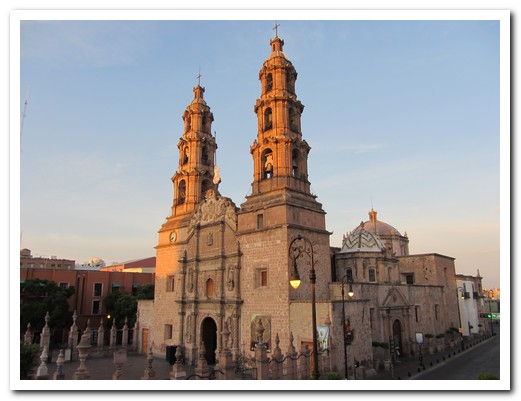
Aguascalientes´s Cathedral
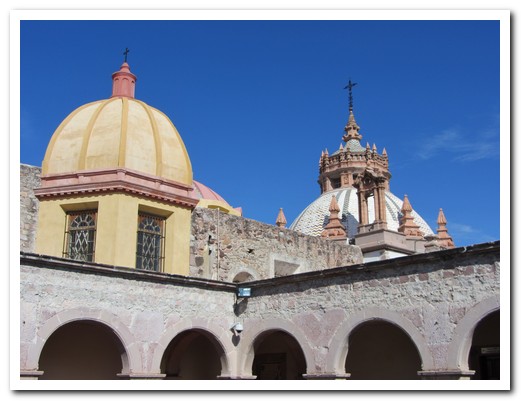
Church domes
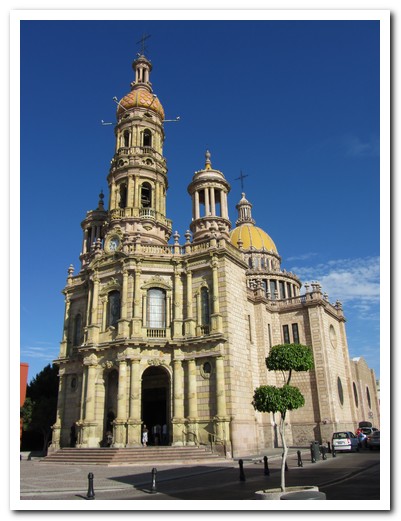
Templo de San Antonio
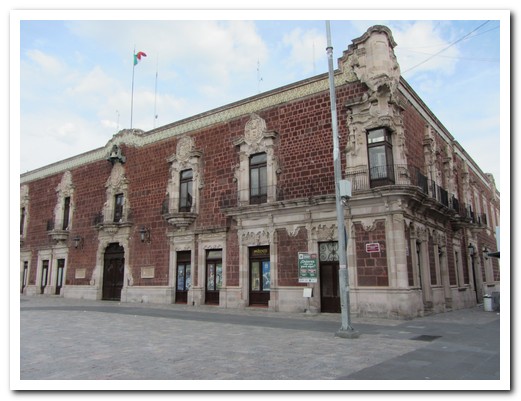
Old Town Hall of Aguascalientes
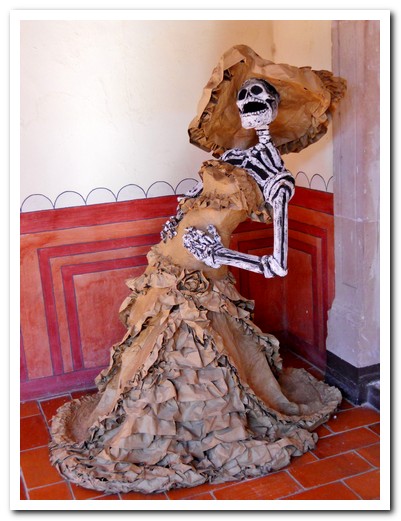
In Mexico there is a different attitude to death ...
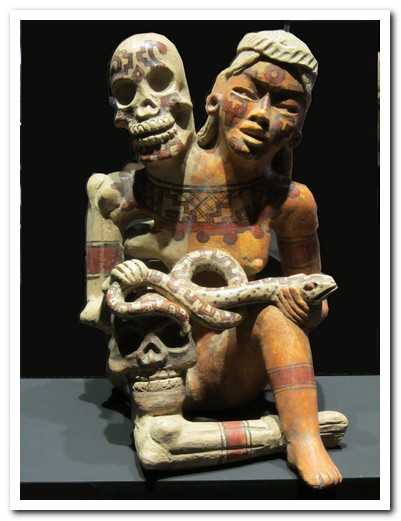
... from pre-Hispanic to modern times ...
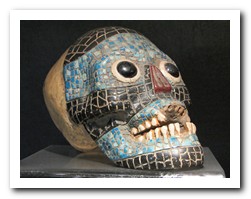 |
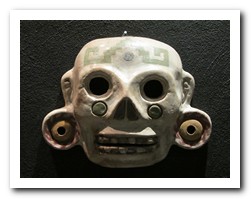 |
| … as displayed in the Museum of Death in Aguascalientes |
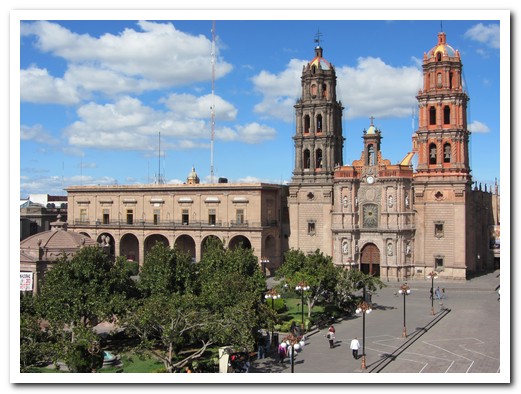
Cathedral San Luis Potosí
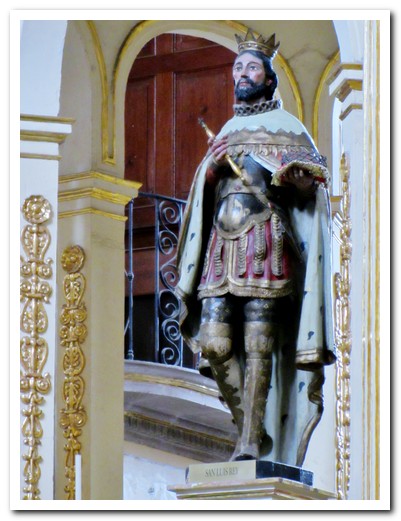
Statue of Louis IX, patron Saint of San Luis Potosí, on the altar

Jesuit Church and Loreto Chapel
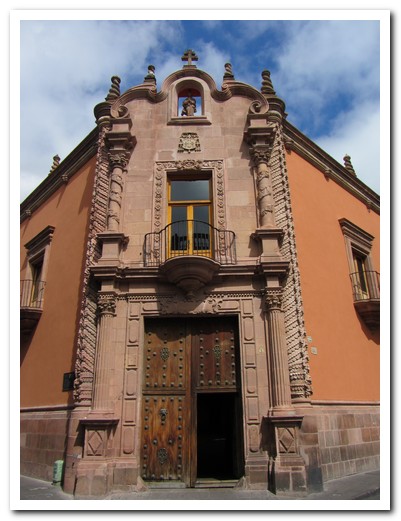
Royal Treasury building
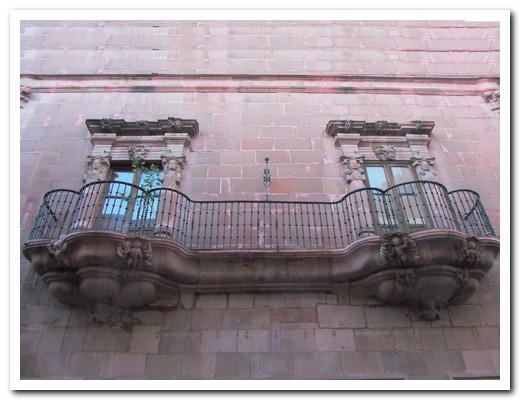
Balcony
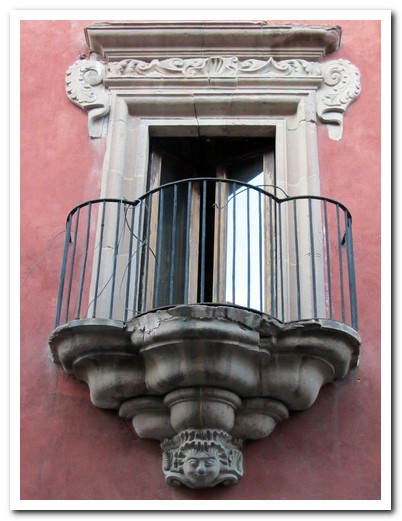
Another balcony
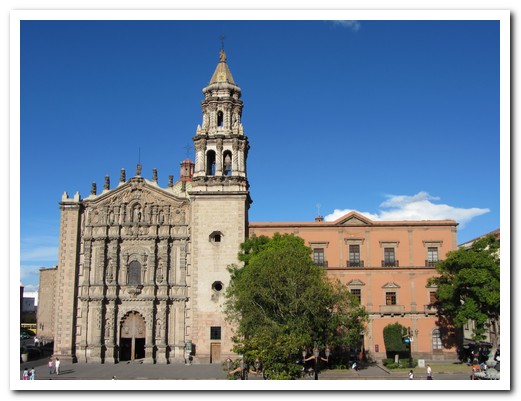
Templo del Carmen
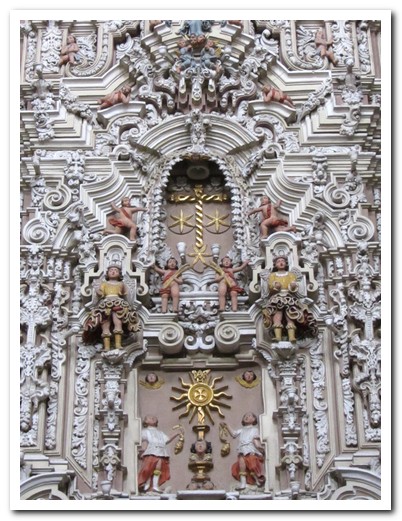
Elaborate carvings inside of Templo del Carmen

San Miguelito
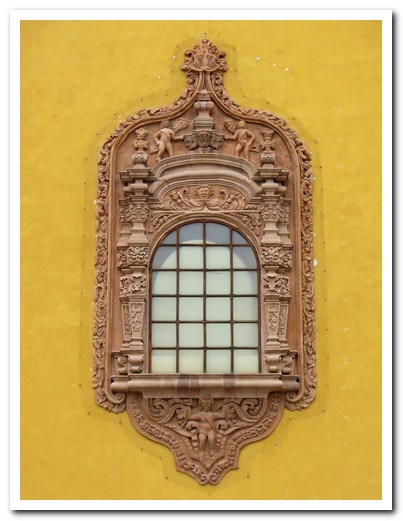
Decorative window
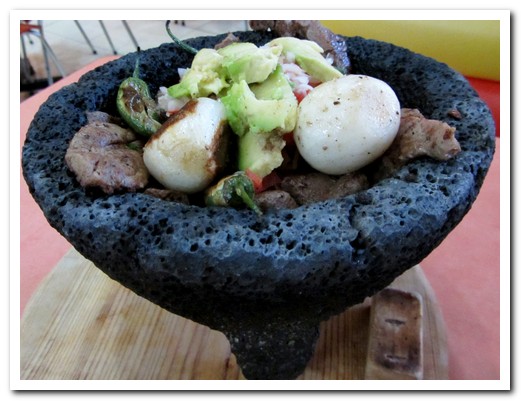
Molcajete - grilled meat, cactus, chillies, onions, avacado and cheese served in a stone mortar
Las Morismas de Bracho 2011
29th August 2011
Here is a short movie of Las Morismas de Bracho 2011 in Zacatecas.
.
Zacatecas
29th August 2011
We timed our arrival in Zacatecas [28] for the annual Traditionales Morismas de Bracho, re-enactments of battles between the Moors and Christians from old Spain, performed here for over 300 years. More than 11,000 people dressed in medieval attire paraded through the streets before battling it out over 3 days on a nearby hillside until the Christians finally claim victory. Click here for a short video of the parade.
.
Zacatecas, in the north central highlands at 2400 metres was once an important silver mining town and is well deserving of its World Heritage status. Attractive pink stone buildings and churches with ornate church bell towers and domes line the streets of the colonial heart. From the lovely central Hotel Terrasse we could cover all the sights on foot.
.
In the ruins of the Convent of San Francisco, the Museo Rafael Coronel displays over 3000 ritual masks, dating from pre-Hispanic to contemporary, from all over Mexico.
.
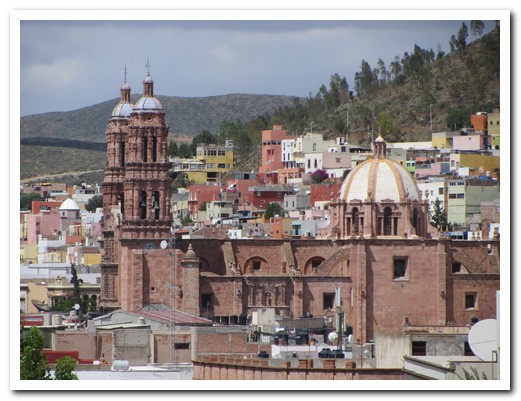
Zacatecas Cathedral
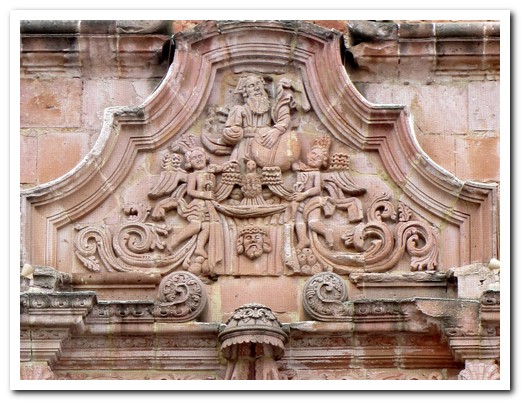
Carving on the Cathedral side doorway
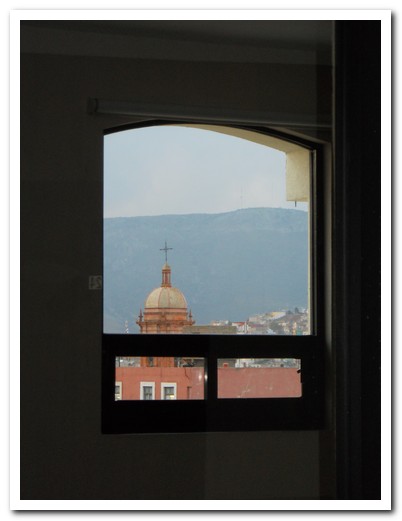
Church dome through the window of Terrasse Hotel
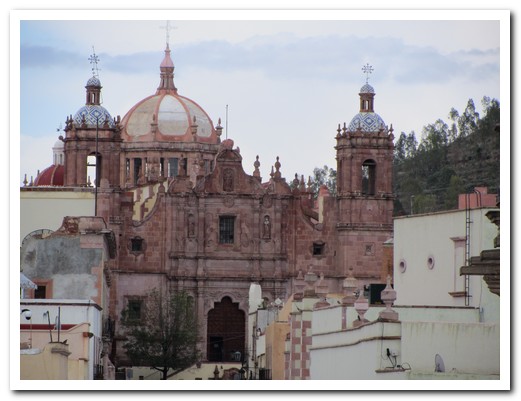
Templo de Santo Domingo, formerly Jesuit
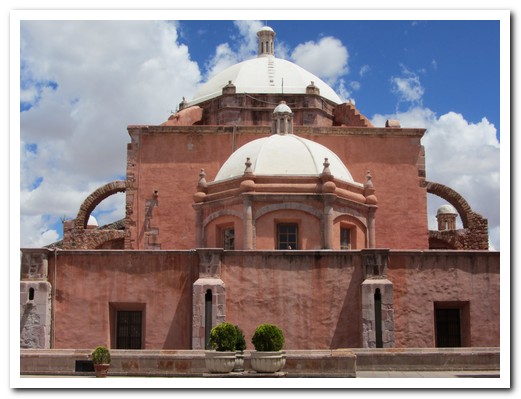
Templo de San Agustin
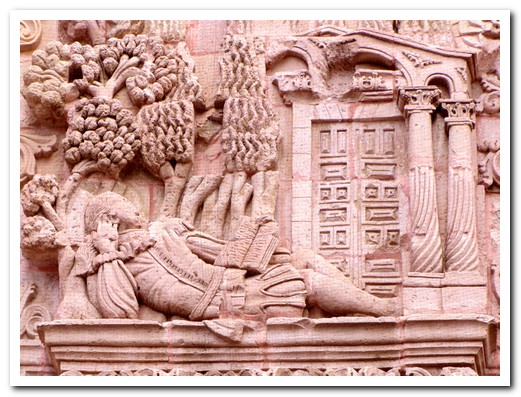
Detail above the side door of Templo de San Agustin
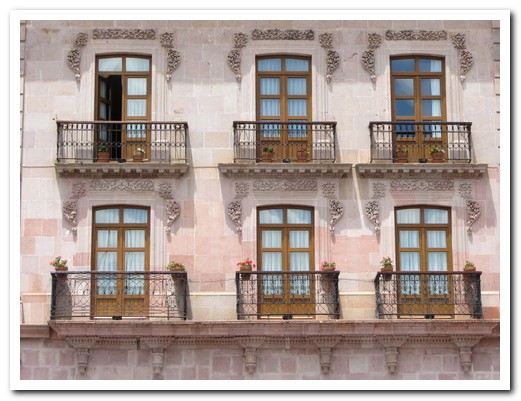
Balconies in the pink stone
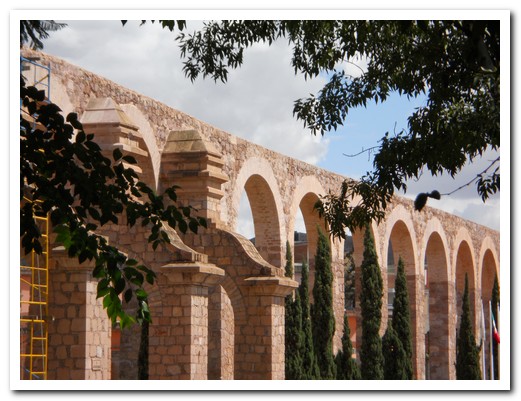
Aqueduct

Old pink stone theatre - Teatro Calderón
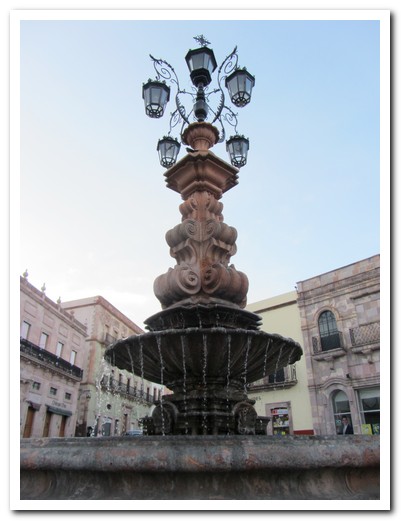
Fuente de los Faroles (fountain of the street lamps)
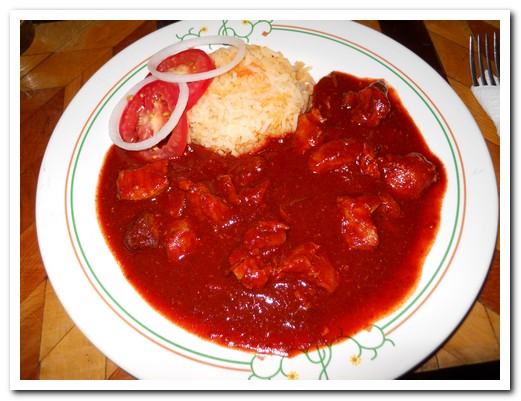
Assado de Boda from nearby Jerez - pork with oranges, chocolate, chilli and spices
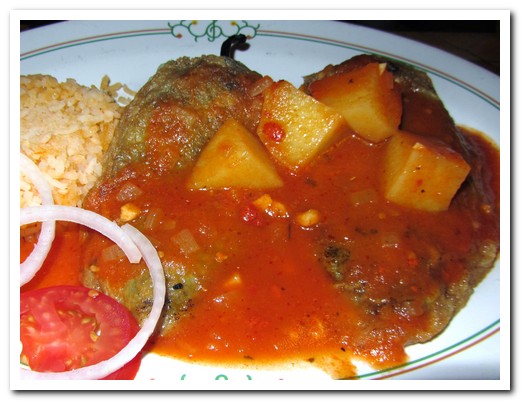
Zacatecas stuffed chillies
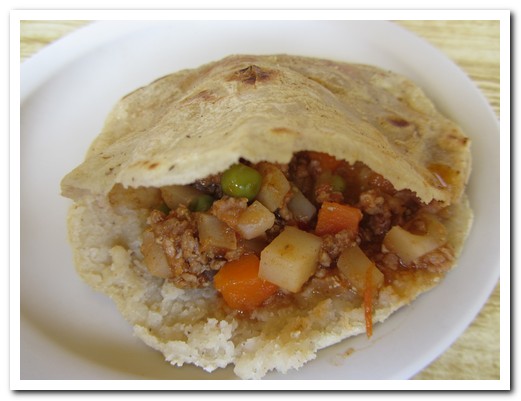
Gordita (Fatty) - stuffed tortilla
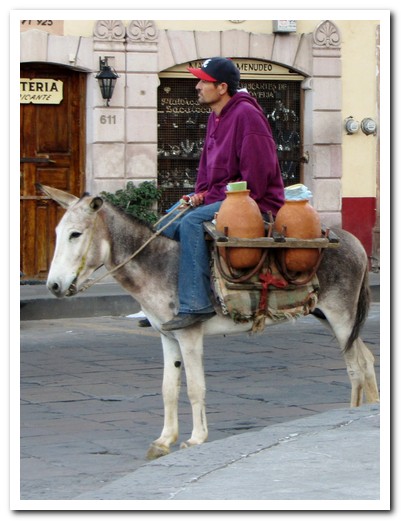
Donkey bringing honey wine made from cactus to town
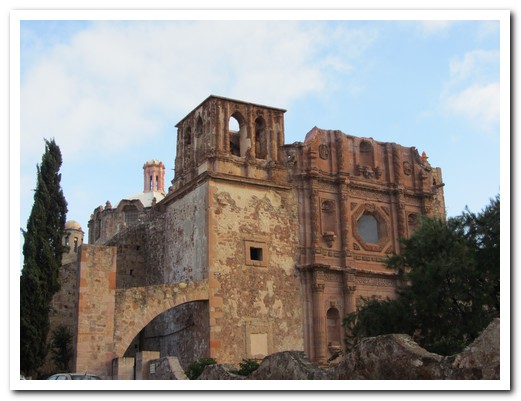
Ruins of ex-Convento San Francisco
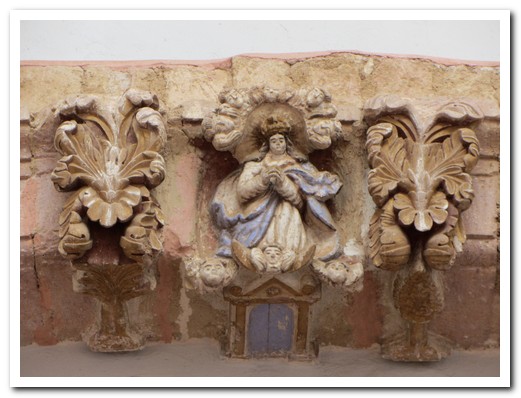
Detail of the ceiling of the Convento
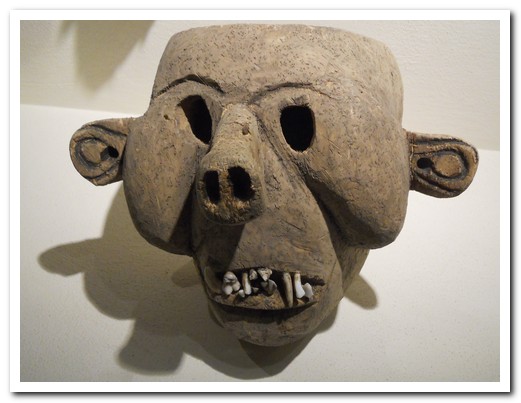
There are 3000 ceremonial masks ...
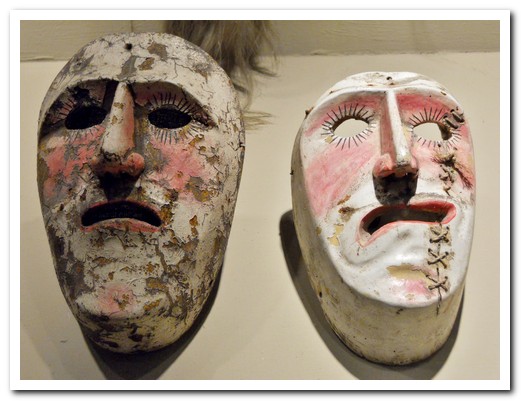
... in the Museo Rafael Coronel
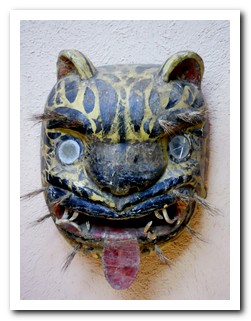
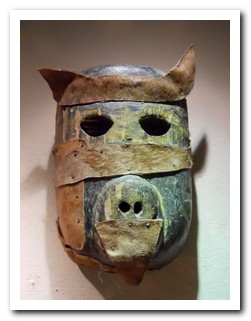
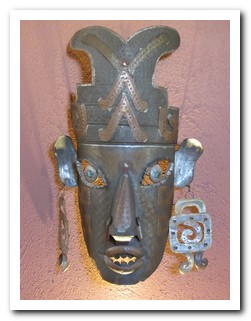
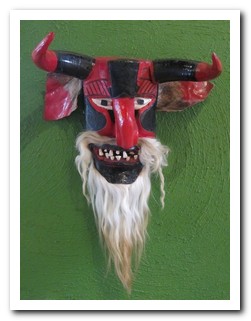
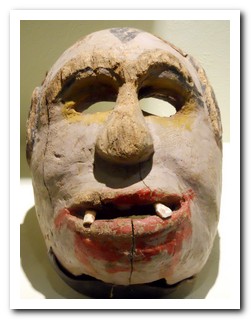
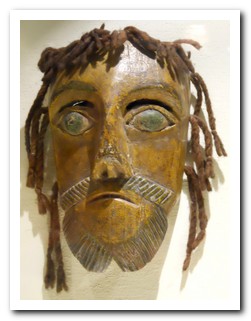
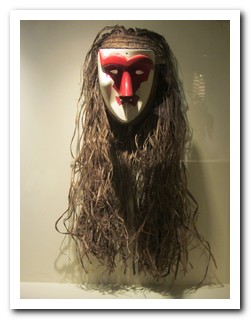
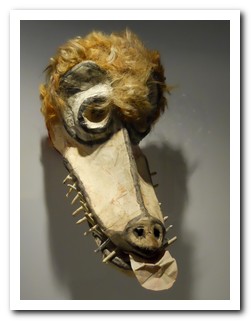
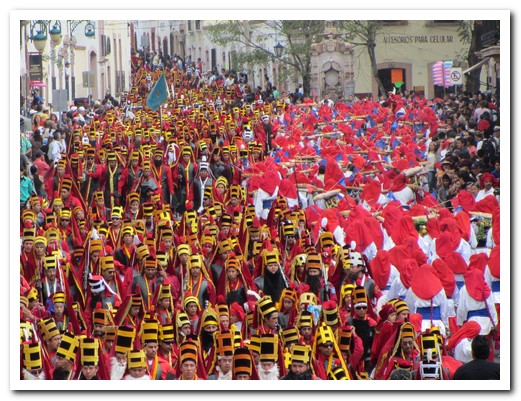
11,000 people, dressed as Christians and Moors, filled the streets
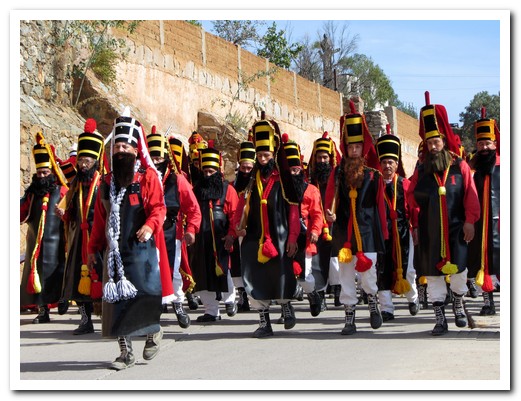
The Christians march ...
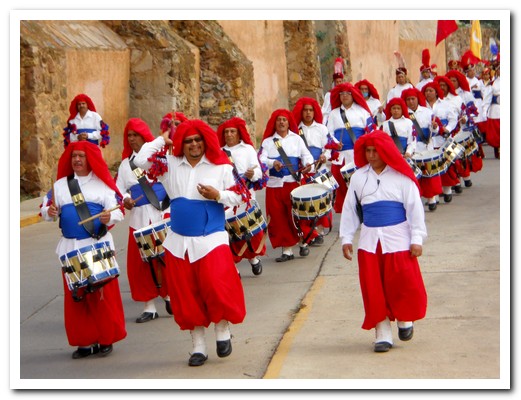
... followed by the Moors ...
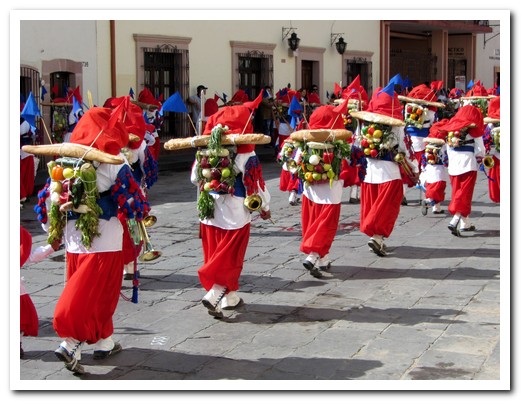
... off to battle with their provisions on their backs
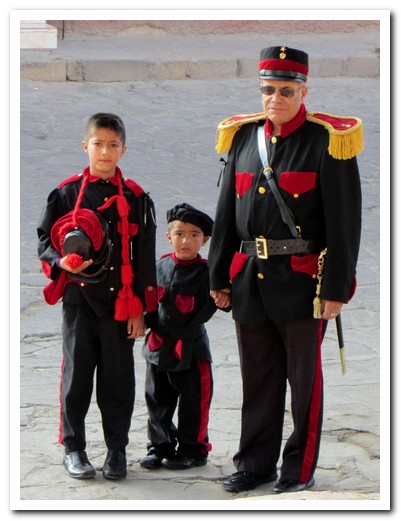
The whole family gets involved
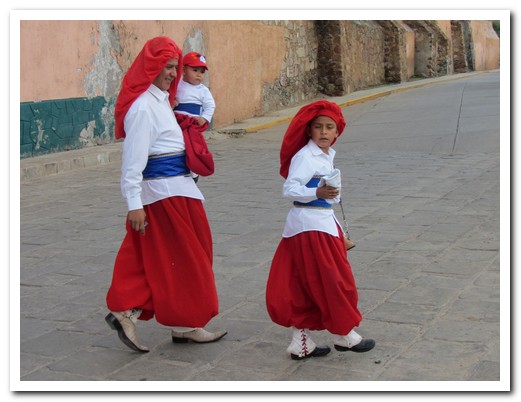
A family of Turks goes to the battle
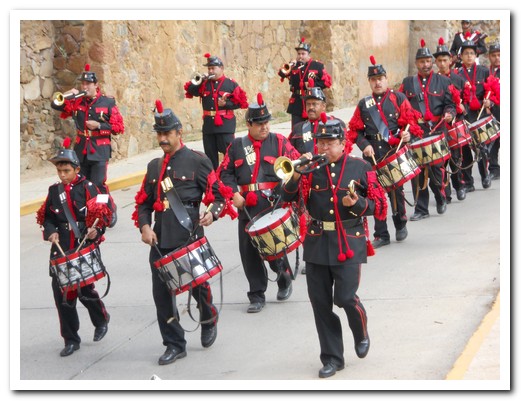
Christian drummers
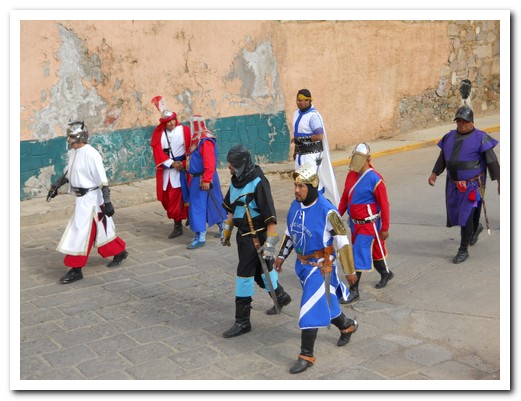
Charlemagne´s knights
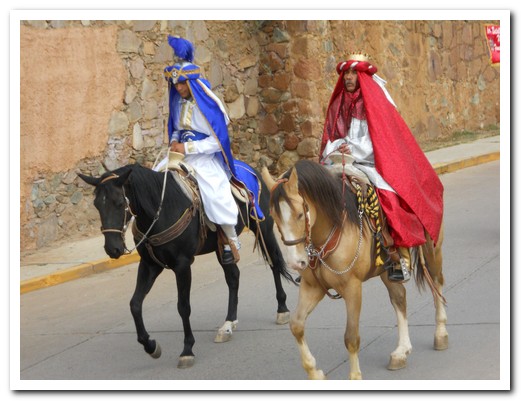
Charlemagne´s horsemen
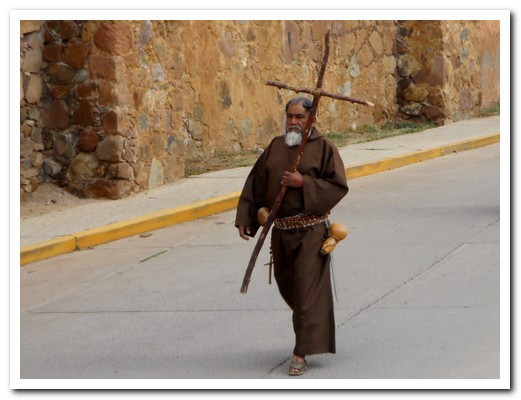
Friar
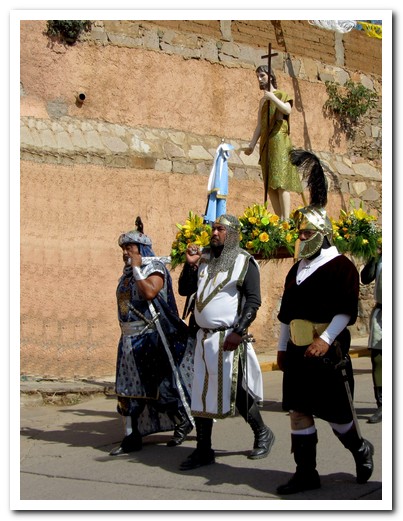
Statue of John the Baptist
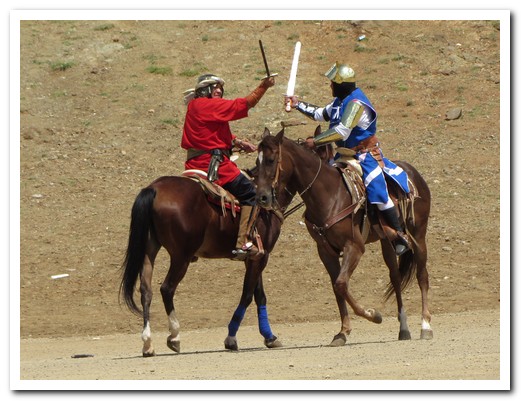
Let the battle begin
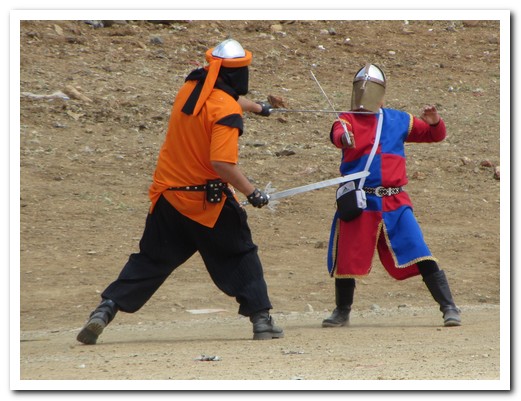
Two soldiers in the battle
Mariachi Festival – Guadalajara 2011
04th September 2011
Here is a short movie from the Mariachi Festival 2011 in Guadalajara.
.
Guadalajara
04th September 2011
The Mexican hat dance and mariachis come from Guadalajara [29], Mexico´s second largest city – founded in 1542 in the Western Highlands of the country. Colonial stone mansions, churches and government offices in the historic centre stand amidst graffiti covered derelict buildings. We stayed about 6 blocks north of the centre at Las Sabilas, a hotel owned by an expatriate American garden designer. The wonderful garden with hummingbirds feeding on the flowers was a haven from the busy streets. It happened that the annual Mariachi Festival was on, so we caught a free performance outside the Cathedral. Click here for a short video.
.
Carne en su jugo, meat served in its own juice, is the culinary specialty here. We enjoyed it at Karnes Garibaldi while listening to mariachis. Torta ahogada, pork sandwich drowned in chilli sauce is also popular.
.
Rows of blue agave plants grow around the village of Tequila where the famous drink is made. After an interesting tour of the fields and factory we got to try the various finished products – clear, aged a little, aged a lot, and margaritas. Next day we headed out to Lake Chapala, the largest lake in México. Many North Americans are retired at the pretty lake side village of Ajijic. Tlaquepaque, about 10 k from Guadalajara is another colourful village, now absorbed into Guadalajara but with its own history and artisans.
.

Guadalajara Cathedral
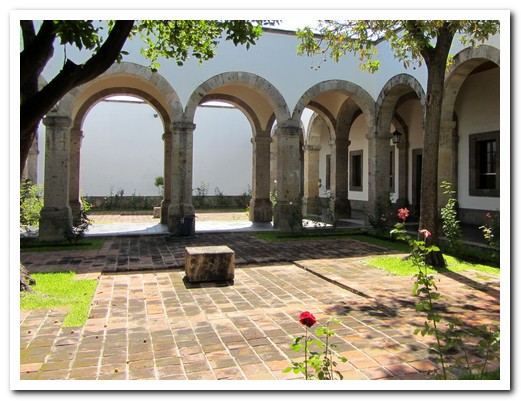
One of 23 stone courtyards in the former orphanage (1805)
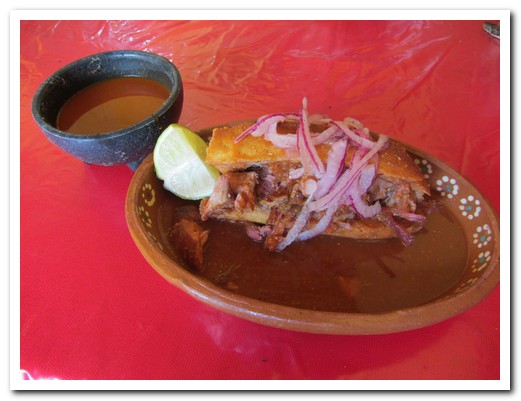
Torta ahogada - pork sandwich drowned in chilli sauce
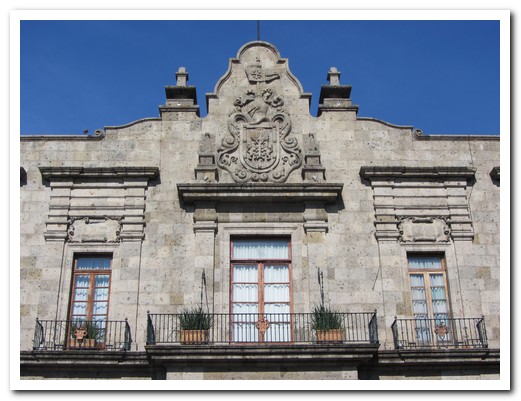
Government building with Spanish coat of arms
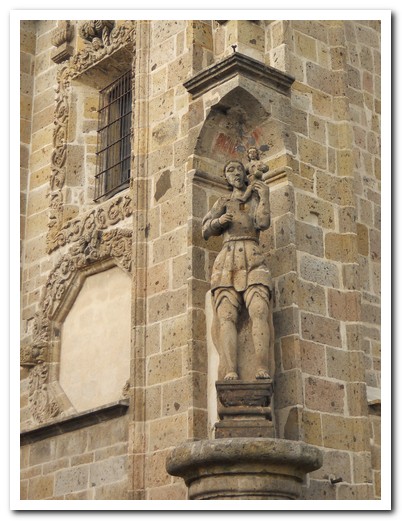
Santa Monica - corner statue
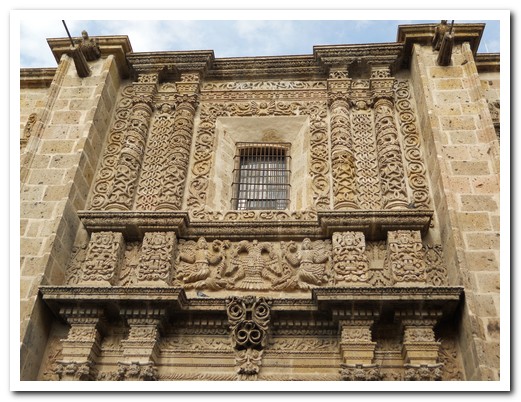
Santa Monica - ornate carvings
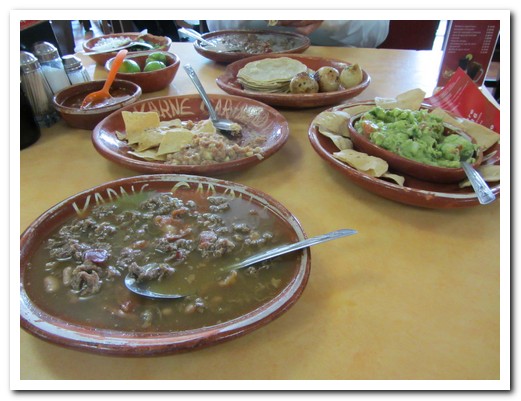
Carne en su jugo - meat cooked in its own juice
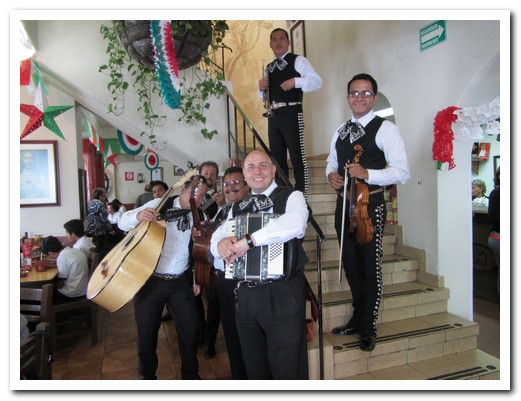
Mariachi in the restaurant Karne Garibaldi
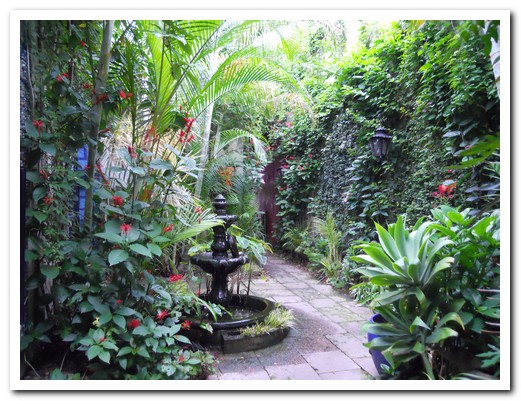
Garden haven at Hotel Las Sabilas
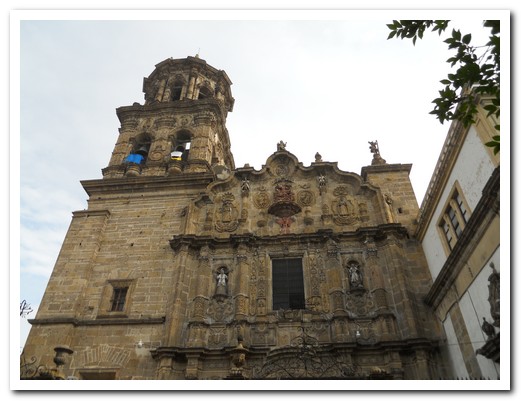
San Filipe
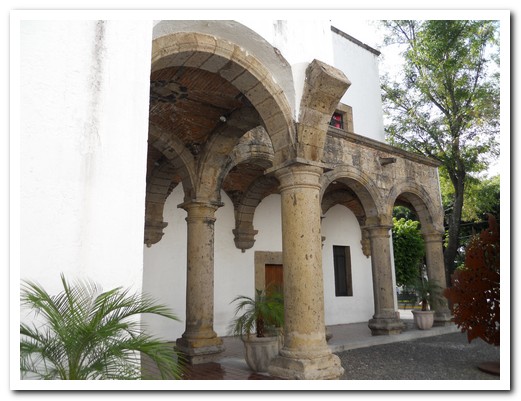
Ex-Convento El Carmen
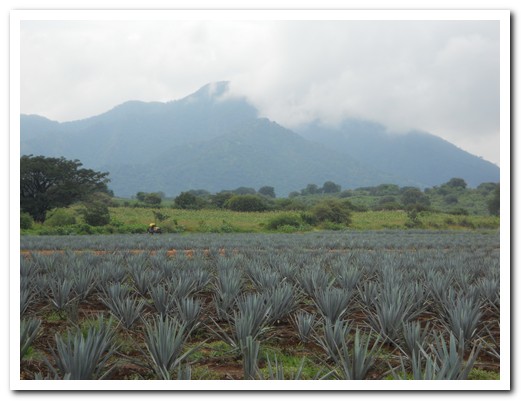
Blue agave growing near the village of Tequila
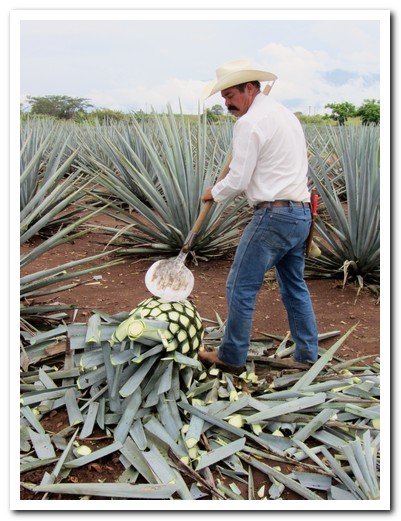
The leaves are first cut off with a special tool ...
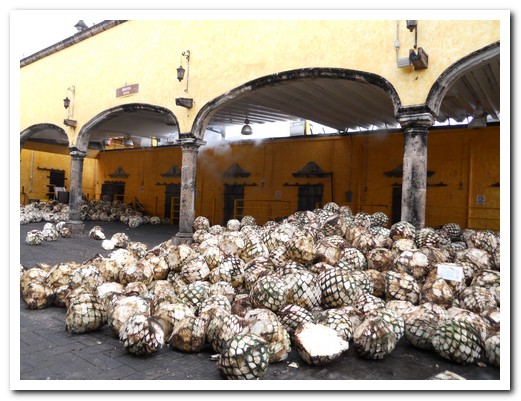
... then the agave pineapples are steamed at the beginning of the Tequila making process
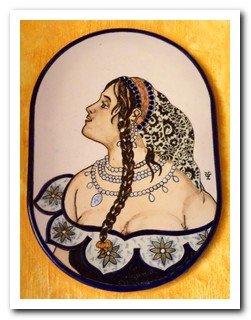 |
 |
| Toilet signs in the pueblo of Tequila |

San Agustin in Guadalajara
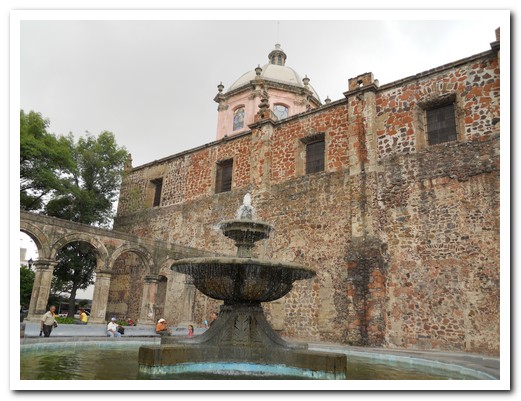
San Francisco
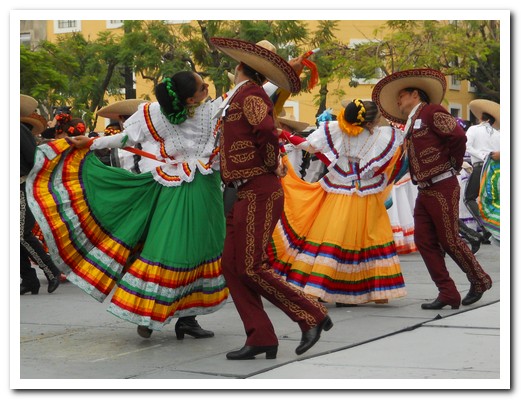
Free concert in a city plaza ...
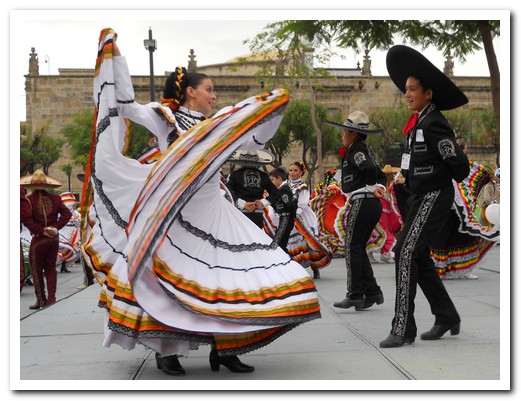
... during the Mariachi Festival

Lake Chapala, the largest in México, is an hour southeast of Guadalajara
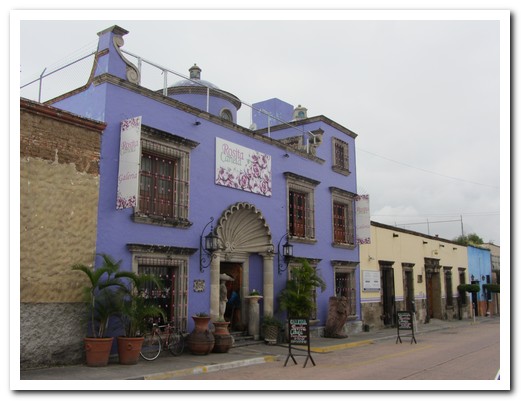
Colourful Tlaquepaque, home to many artisans, is near Guadalajara
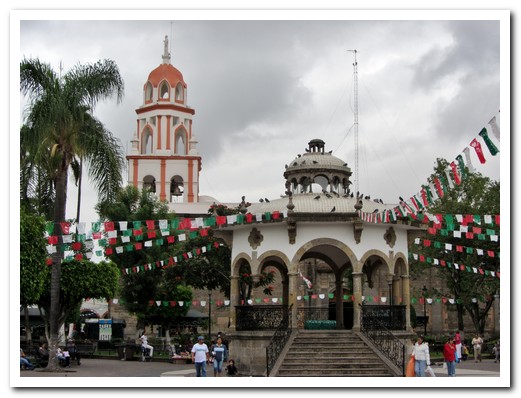
Plaza at Tlaquepaque decorated for Mexican Independence Day
Pátzcuaro
09th September 2011
At over 2000 metres the Pueblo Mágico, Pátzcuaro [30] lies south of the mountain fringed Lake Pátzcuaro. The bustling centre is all red and white adobe buildings with terracotta tiled roofs, colonial churches and pretty plazas. A busy market, where local food is cheap and good, spills out onto the streets. A huge plate of chicken with potatoes, carrots, cheese and tortillas smothered in sauce, more than enough for 2, is less than $10. Pátzcuaro is one of our favourite Mexican pueblos.
.
The small Purepécha villages that dot the lake each produce a different handicraft such as pottery, wooden masks and fine needlework, their wares displayed outside to attract passersby. Vasco de Quiroga (1478-1565) established these crafts and did much to protect the indigenous from the worst abuses of the Conquistadores. Today he is revered. Janitzio is the largest of the islands in Lake Pátzcuaro where the men use large butterfly-nets to fish from small wooden boats.
.
We took a local bus to Uruapan, an hour from Pátzcuaro, to visit the National Park which is in the centre of the town. Water gushes from underground creating a lush rainforest environment, home to many species of plants, animals, birds and butterflies. Trout raised in the streams and covered with macadamia nuts made a delicious lunch. In the town is the first hospital in the Americas, with doorways and windows carved by Purepécha artisans in the Mudéjar style 4 centuries ago.
.
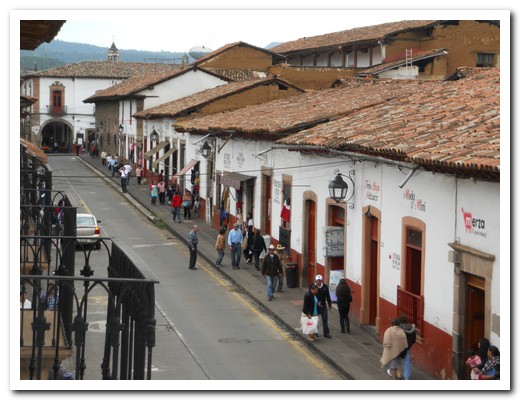
Red and white adobe colonial centre of Pátzcuaro
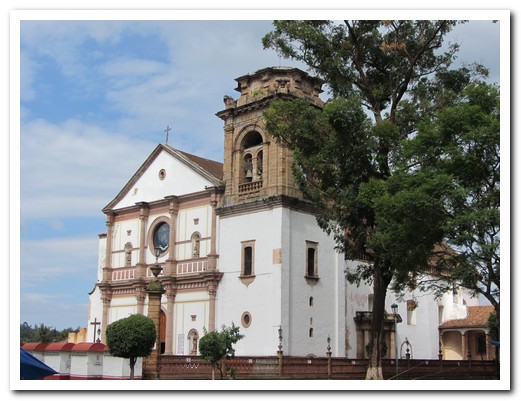
Basilica de Nuestra Señora de la Salud (Our Lady of Health) - 16th century
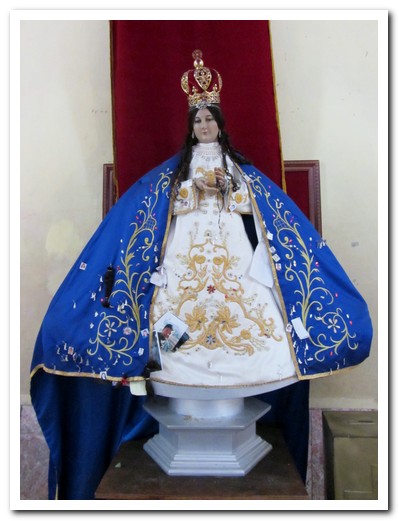
Nuestra Señora de la Salud locally made from corn cobs
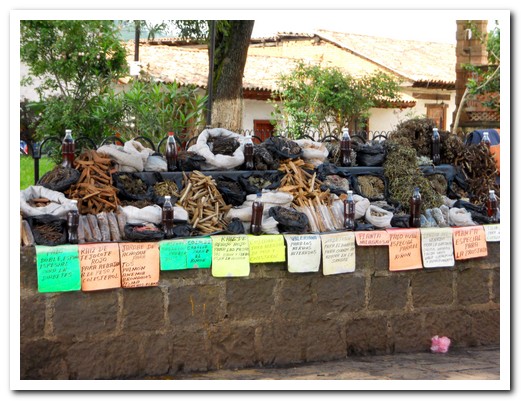
If prayer doesn´t work, try the herbal medicine sold outside the Basilica
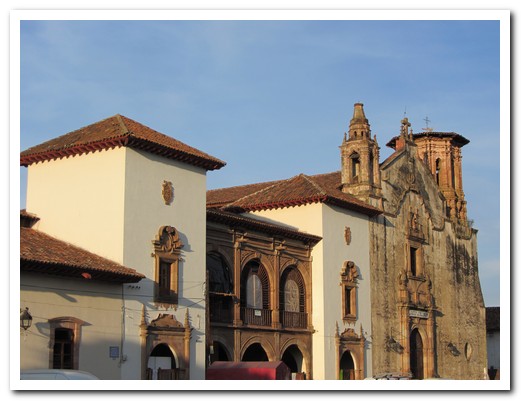
16th century ex-Convento San Agustin, now the town library
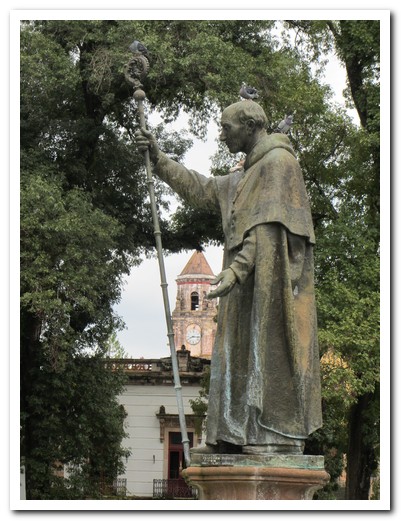
Statue of the revered Vasco de Quiroga in Plaza Grande
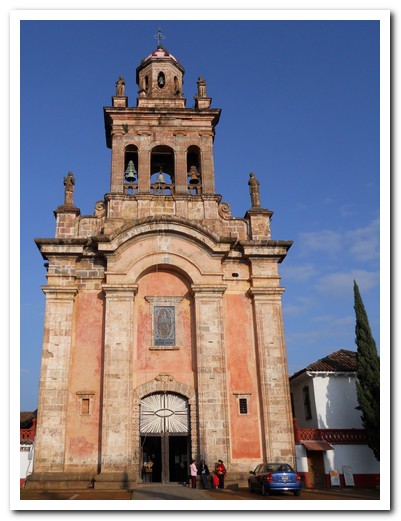
Templo El Santuario
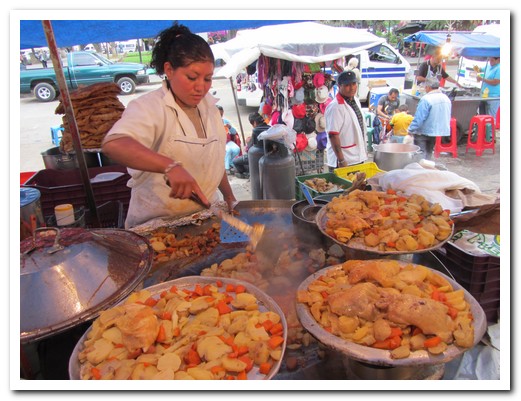
Market food is good and cheap and you get lots of it
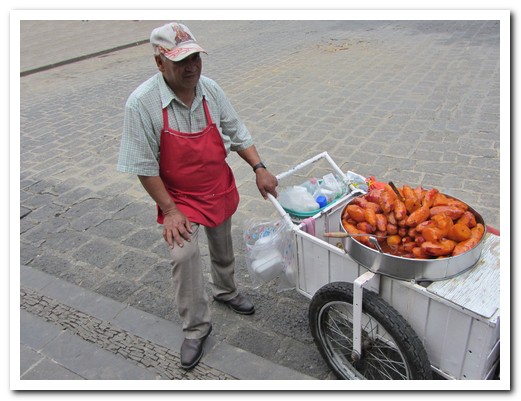
Sweet potatoes in honey make a delicious snack
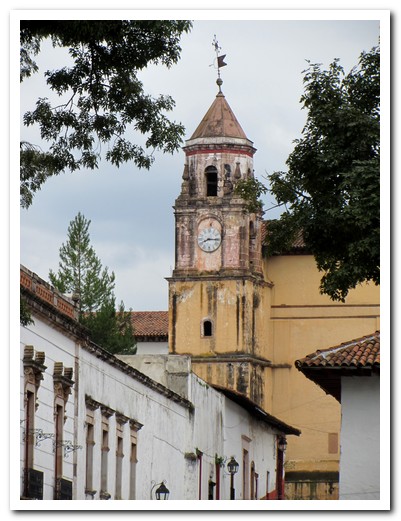
Jesuit Church from 1540
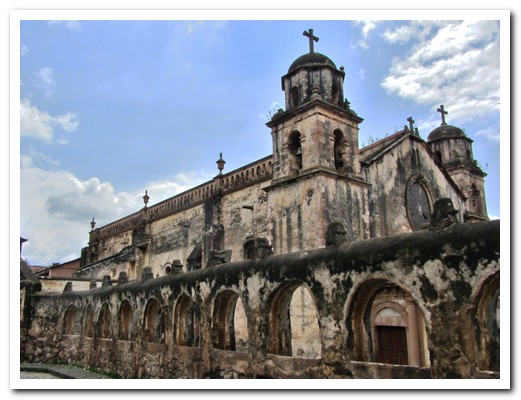
Templo de Sagrario
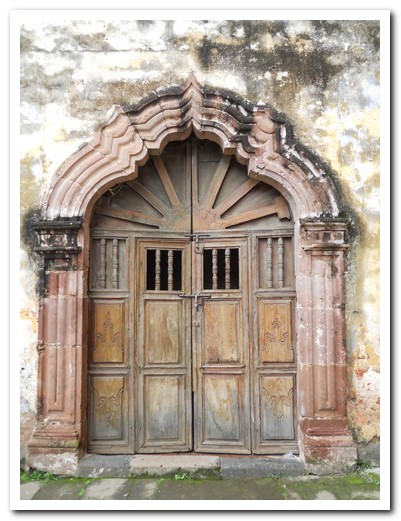
Doorway to the Templo
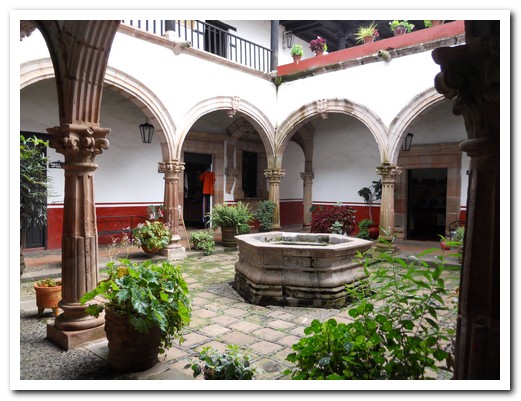
There are 11 courtyards ...
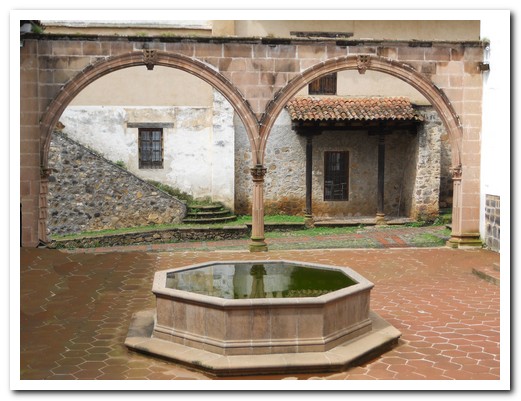
... in La Casa de Once Patios
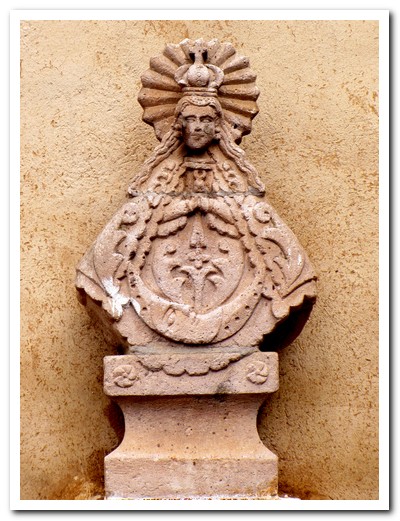
Stone statue of the Virgen in one of the courtyards
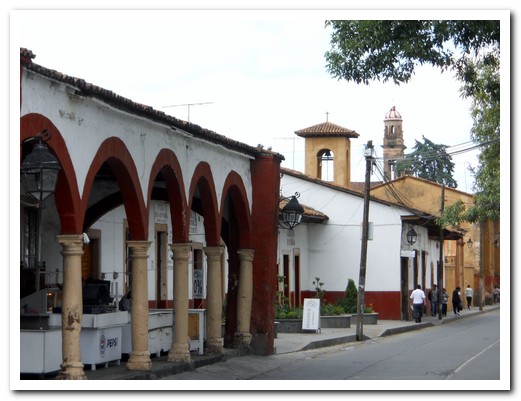
Pátzcuaro street
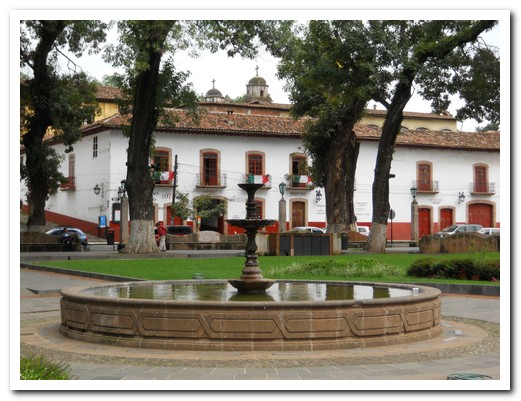
Fountain in Plaza Grande
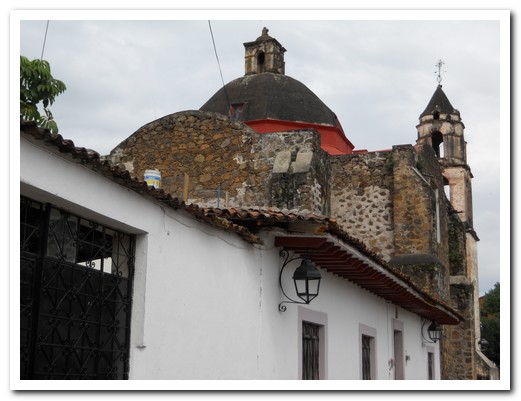
Templo de San Juan de Dios
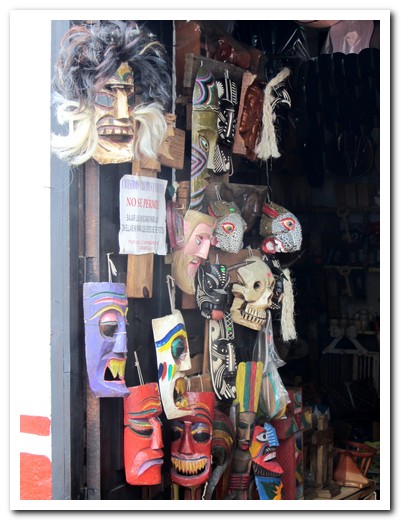
Wooden masks are some of the local handicrafts
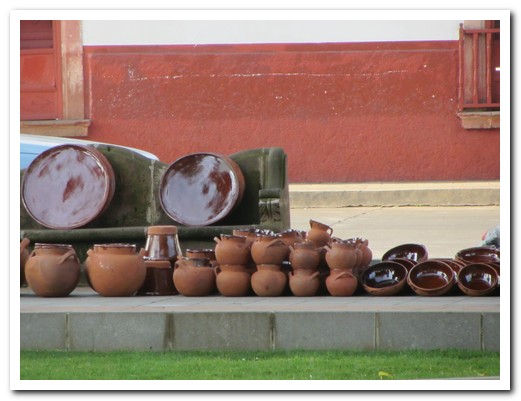
Pottery comes nearby villages - each has its own colours
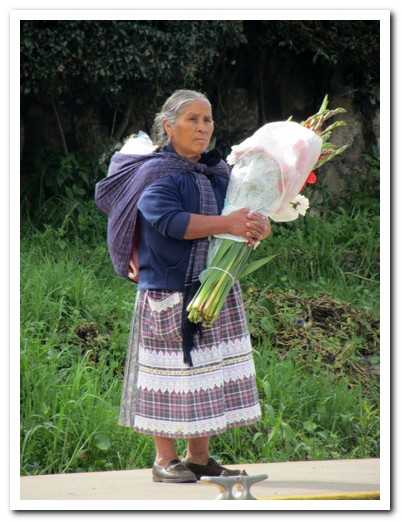
Indigenous lady with flowers
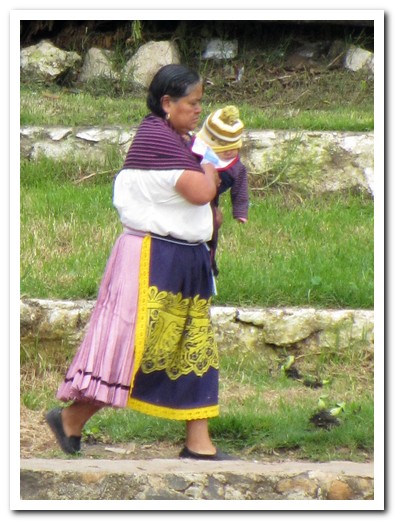
Indigenous women wear embroidered aprons over their skirts
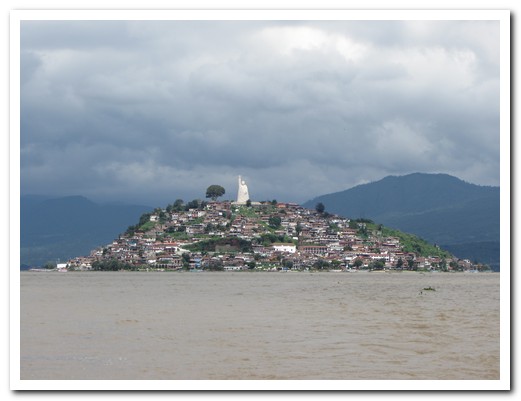
Janitzio Island on Lake Pátzcuaro
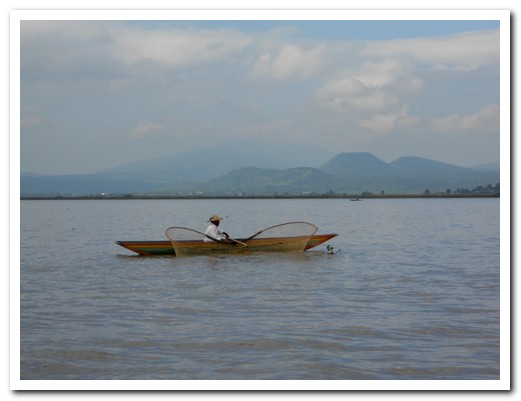
Men with butterfly-nets ...
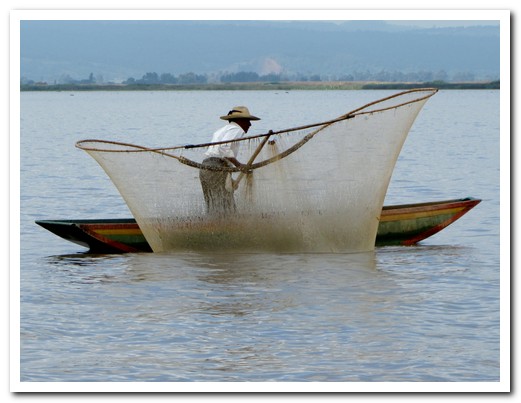
... fish from wooden boats in the lake
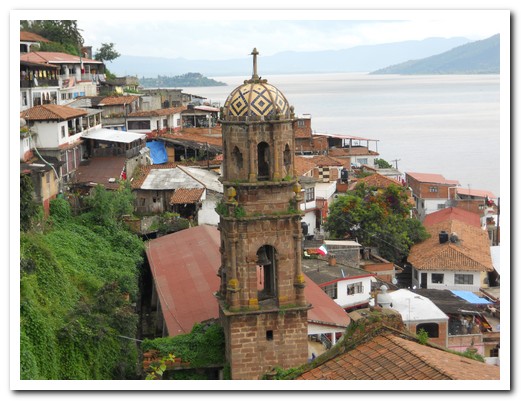
Church on the Island
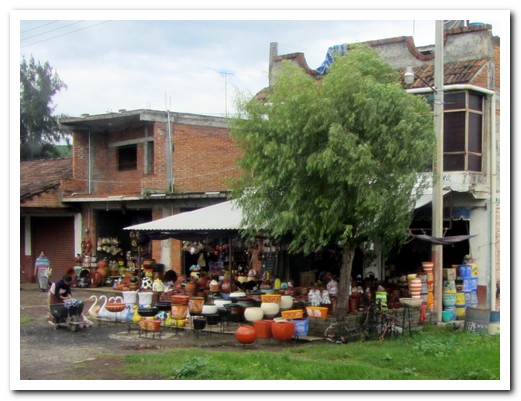
Handicrafts for sale along the road around the lake
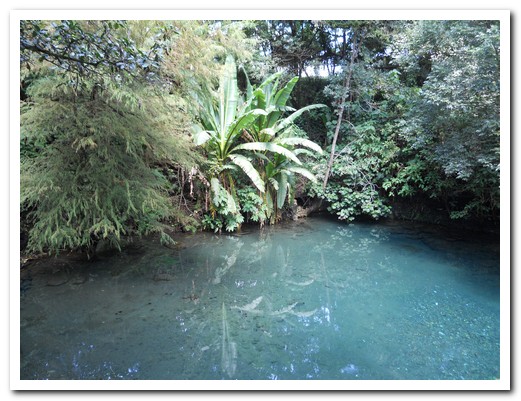
Uruapan´s National Park
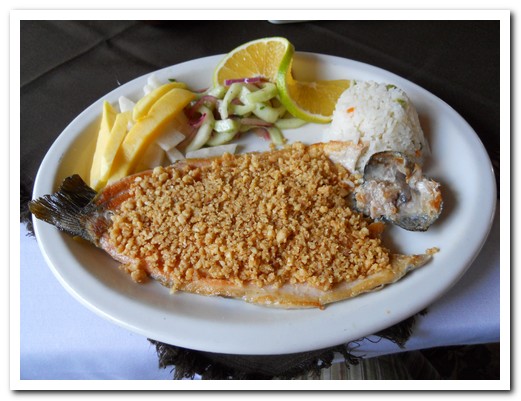
Trout from the stream, covered with macadamia nuts - delicious
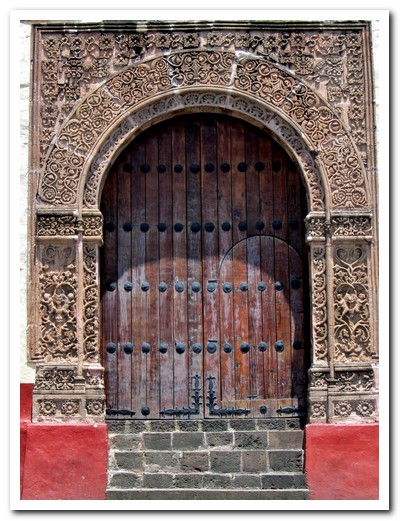
Entrance to the first hospital in the Americas, carved in the Mudéjar style
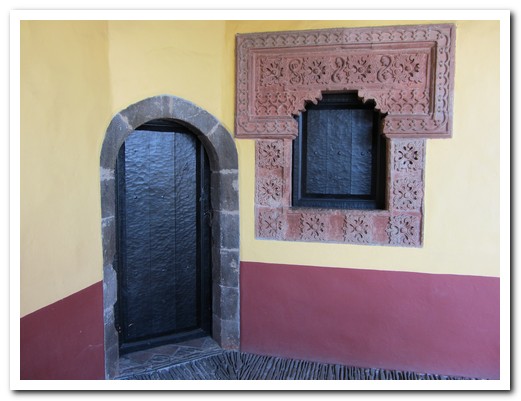
Hospital window, Mudéjar style, by local artisans - 16th century
Dance of the Old Men, Morelia
11th September 2011
Here is a short movie of La Danza de Los Viejos (The Dance of the Old Men) performed in the main Plaza in Morelia. (You can watch it Full Screen by clicking on the arrows in the bottom right hand corner).
.
Morelia
11th September 2011
Morelia [31], capital of Michoacán state, was founded in 1541. Originally Valladolid, it was renamed after the Mexican War of Independence (1810–1821). Buildings in the historic centre are all of an attractive light brown stone, the magnificent cathedral being the centre piece. Morelia is a university town and the faculties now occupy many of the former monasteries. Arched arcades surround the large Plaza de Armas – “The entire plaza (of all Hispanic-American cities) should have portals because they offer much comfort …” ordered King Philip II of Spain (1527-1598).
.
It was impossible to pass through the Mercado de Dulces (sweets market) without buying something. Also delicious is a local fruit salad, gaspacho, which is served with chilli, lime juice and salt. Chamorro, another culinary specialty, is slow cooked pork shank in a rich black sauce of dried chillies with pulque (a type of beer made from cactus) – falling-off-the-bone, melt-in-the-mouth delicious.
.
Leafy parks, sprouting fountains, and even a 253 arch aqueduct make the city a great place for strolling. We were delighted to encounter a performance of La Danza de Los Viejos (The Dance of the Old Men) in the main Plaza. In reality, the “Old Men” are young boys in costume. Here is a short video.
.
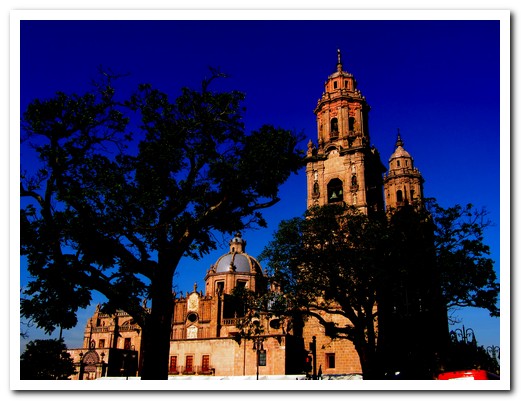
Morelias magnificent Cathedral took 100 years to complete (1640-1744)
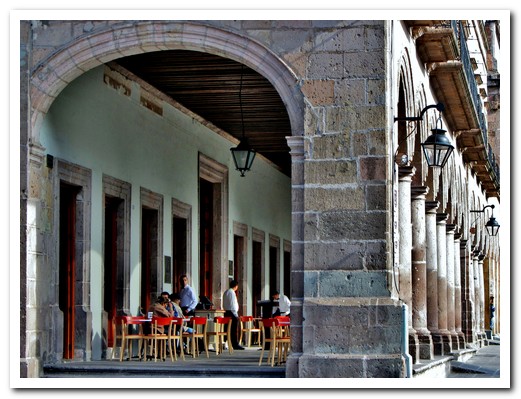
Arcades around the Plaza de Armas
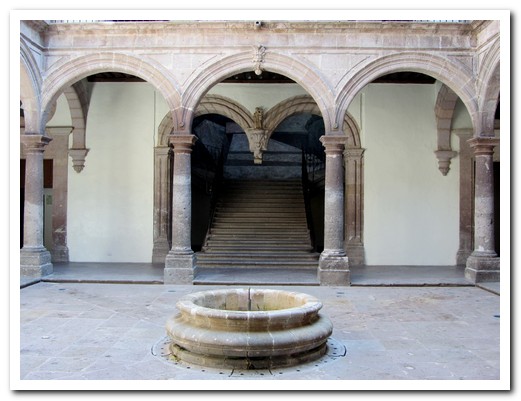
One of many colonial courtyards
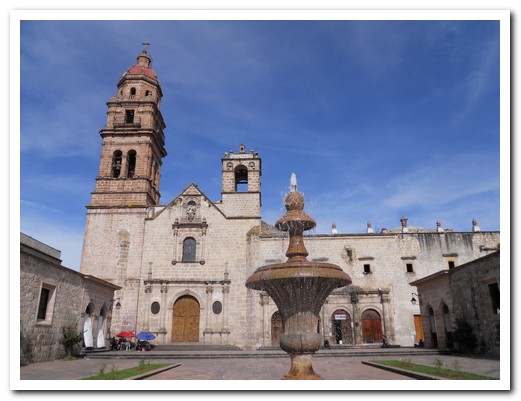
San Agustin
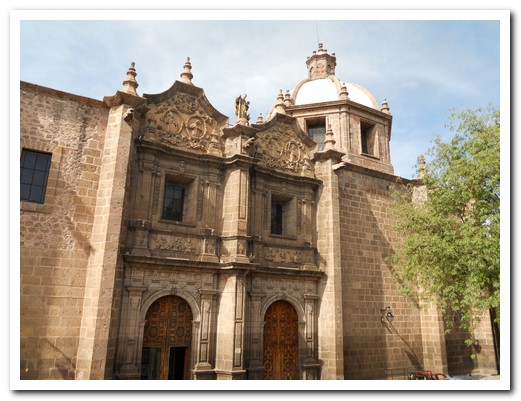
Templo de las Rosas
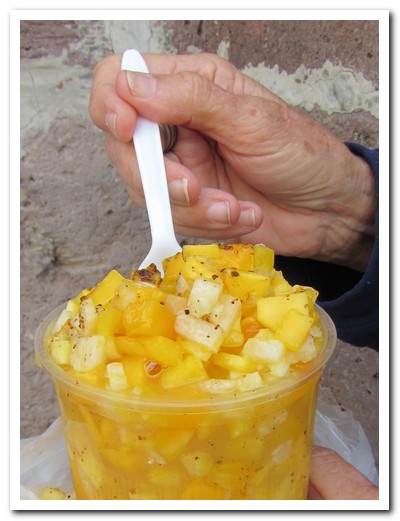
Gaspacho - mango and pineapple with lime juice, chilli and salt - great
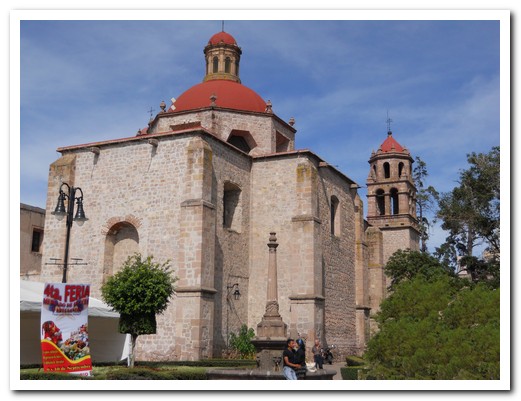
Former Jesuit Church ...
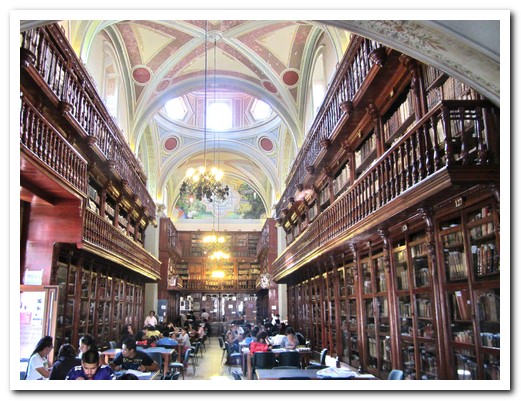
... now the University Library contains 1000s of Agustin & Franciscan volumes
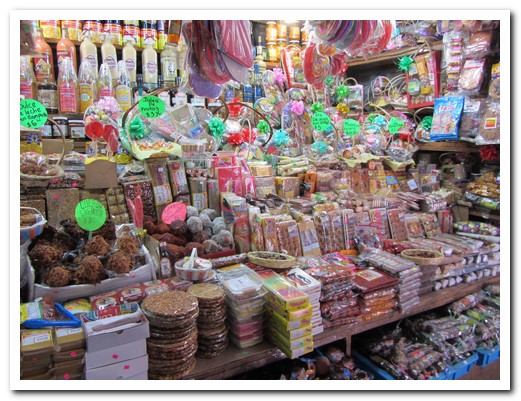
Mercado de Dulce (Sweets Market)

Some of the delicious local sweets
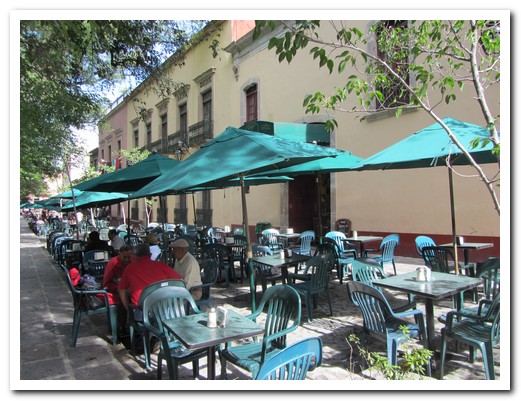
Old men play chess in a leafy Plaza
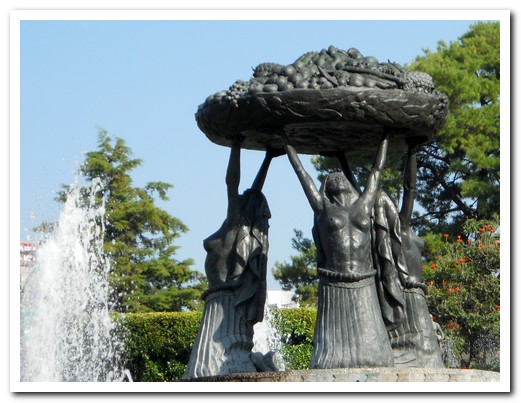
Las Tarascas Fountain with indigenous women holding a basket of fruit
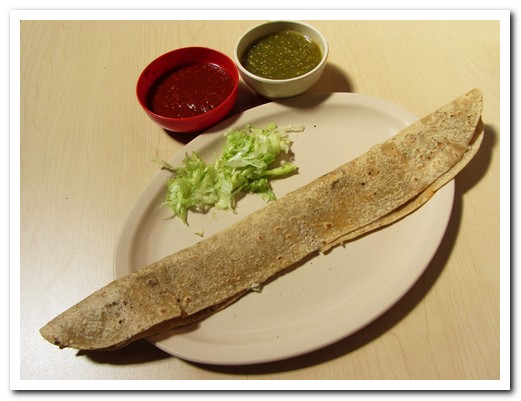
40 centimetre long quesadilla
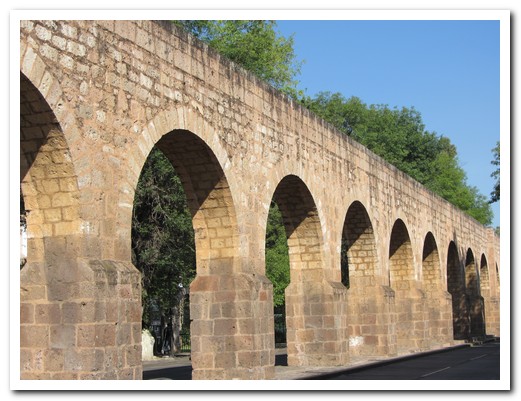
Aqueduct, built 1785, bought water to Morelia
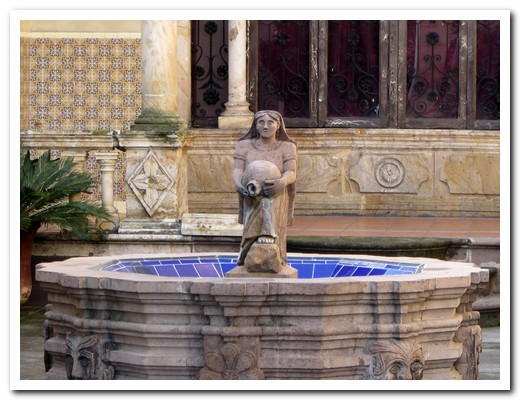
Morelia is a city of fountains
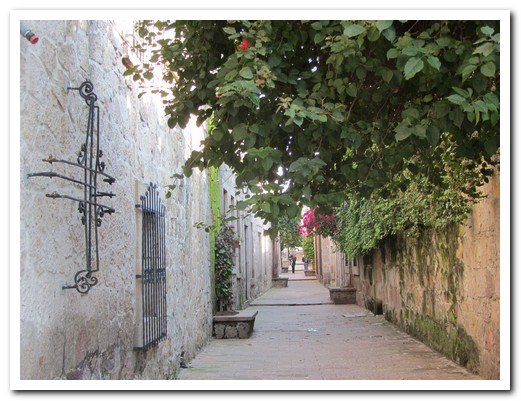
Romance alley
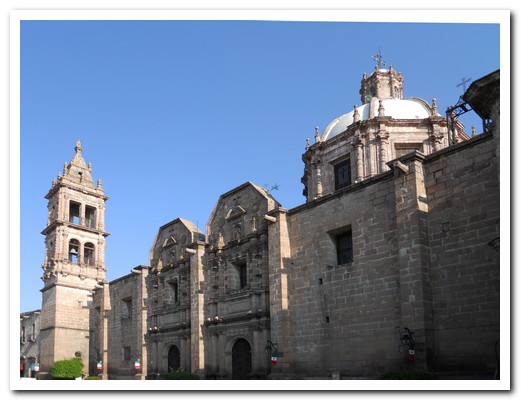
Temple of the Nuns
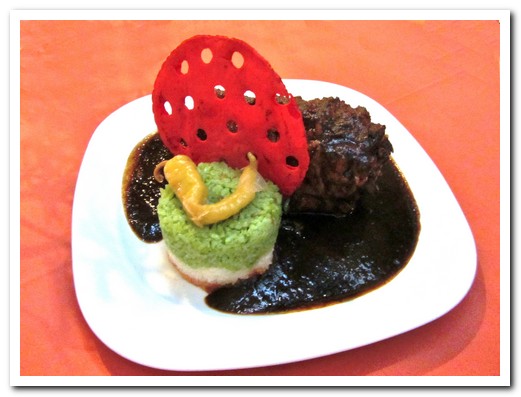
Chamorro - pork shank with a rich chilli sauce - rice in the colours of Mexico
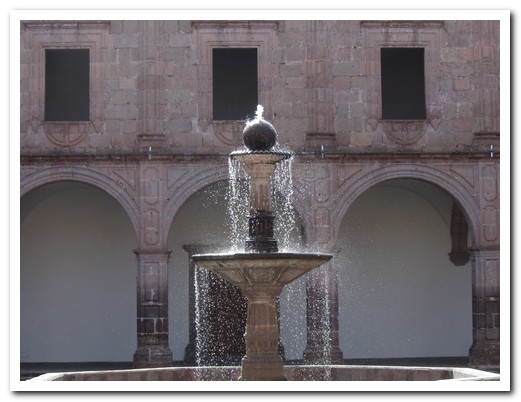
Fountain in the courtyard of Calvijero Palace (1660)
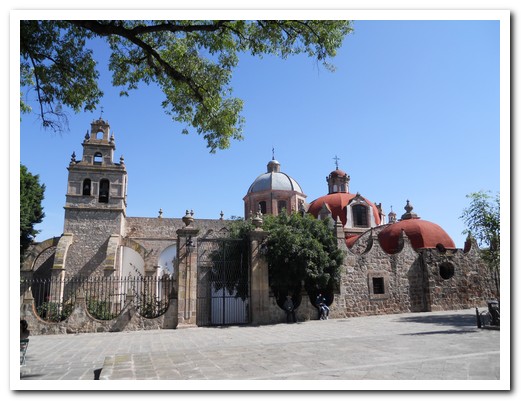
Templo del Carmen
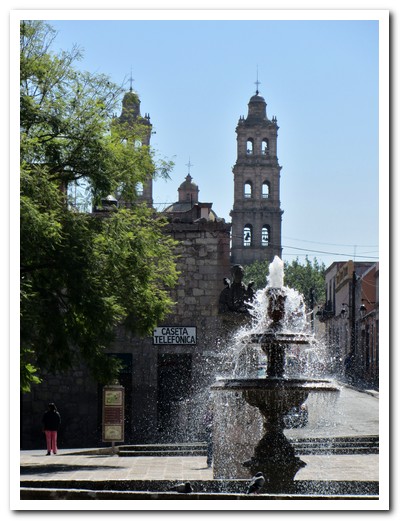
Templo de San José
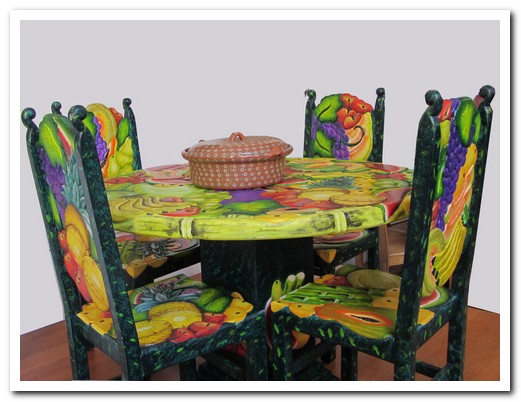
Table and chairs carved and painted by local artisans
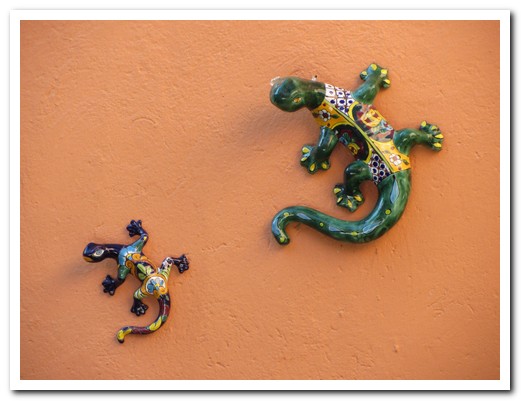
Lizards on a restaurant wall
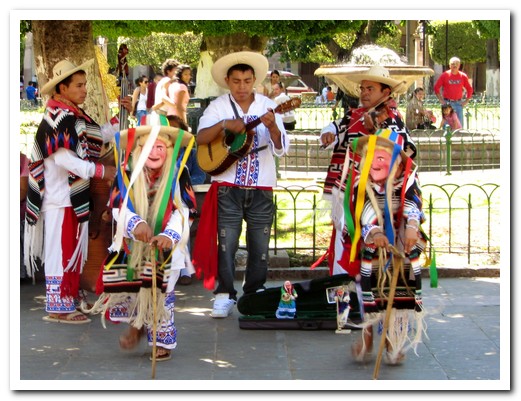
Danza de los Viejos (Dance of the Old Men) in the Plaza de Armas
San Miguel de Allende
15th September 2011
The Hollywood movie “Once Upon a Time in México” (2003) was filmed in charming San Miguel de Allende [32]. A Franciscan friar, Juan de San Miguel founded the city that bears his name in 1542. It is now World Heritage. With bougainvillea tumbling down the muted multi-coloured houses that crawl up the hill side, cobbled streets, a bull ring and clear blue skies it is the classic Mexican colonial town. No wonder thousands of expatriates, mainly US retirees have settled here.
.
We arrived on a Sunday afternoon to find the central plaza packed, a band playing salsa, folks dancing and food carts doing a roaring trade. The Jardín Botánico, 30 minutes walk from town, has over 1000 species of cactus. Many birds and butterflies are attracted to the flowers growing there. The Santuario de Atotonilco is a World Heritage Site, built in the 18th century. The interior is a real surprise, adorned with rich Mexican Baroque murals. It´s about 20 minutes by taxi from San Miguel and an immensely important pilgrimage site for Mexicans.
.
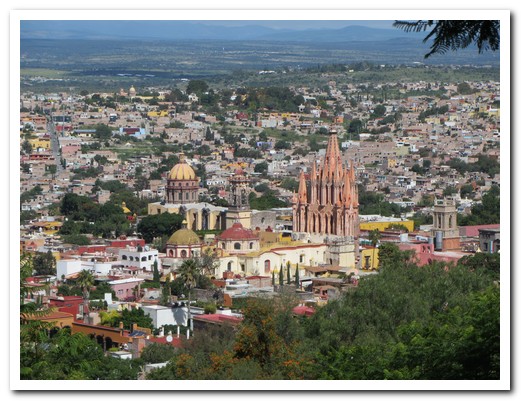
San Miguel de Allende
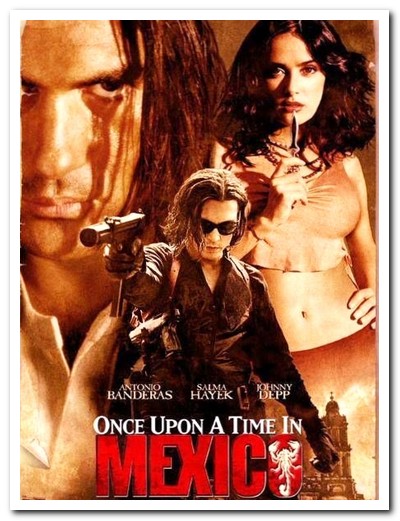
Filmed in San Miguel de Allende (2003)
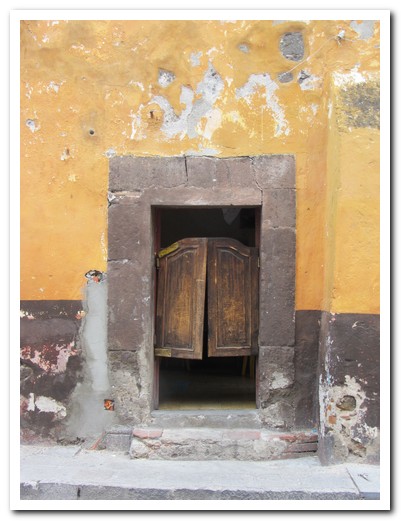
Behind these swinging doors lies a real Mexican cantina
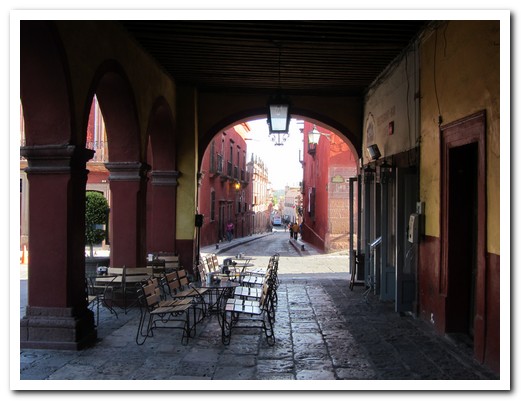
Arcade around the main Plaza
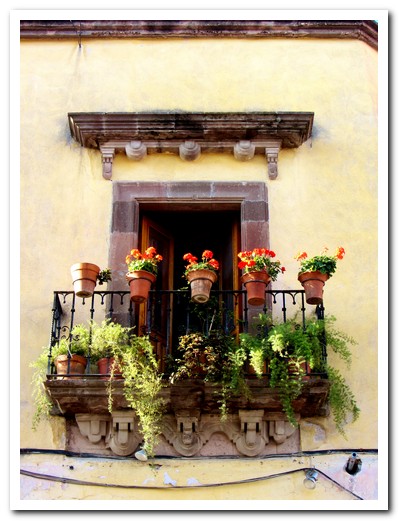
Plant filled window
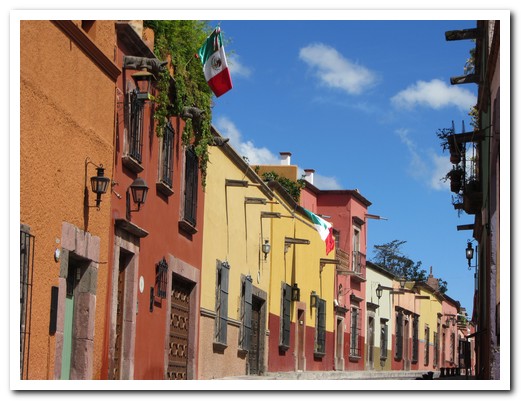
Muted coloured houses of the streets of San Miguel
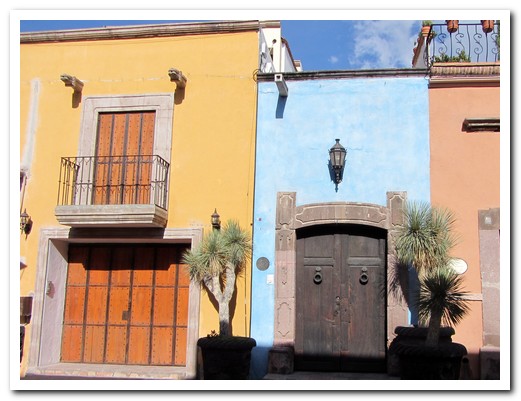
The houses are narrow, but deep
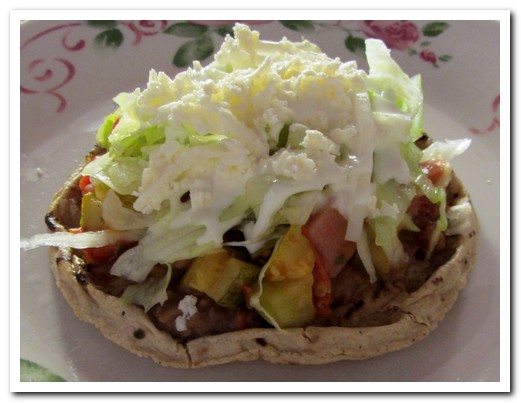
Sope - a tortilla with raised edges full of beans and salad
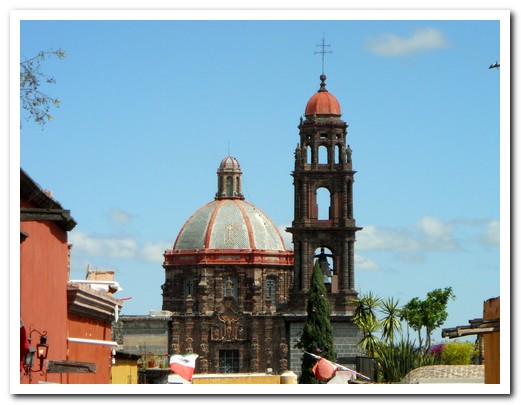
One of the churches in the centre
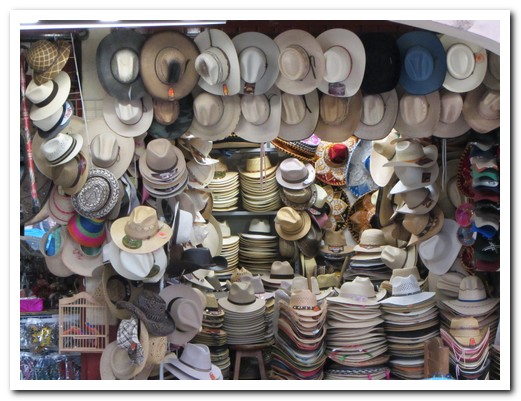
Hats for sale at the market
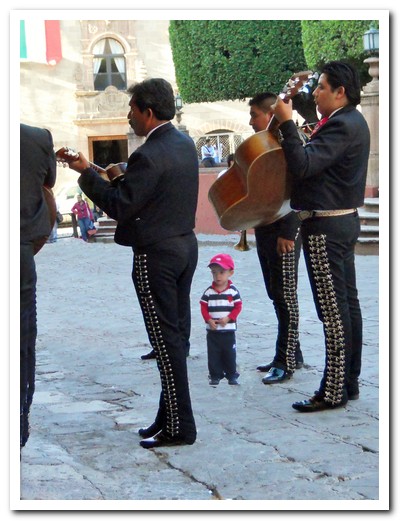
Boy fascinated by mariachis
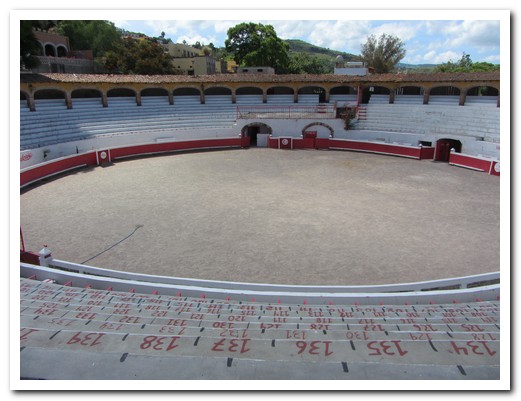
San Miguel´s bull ring
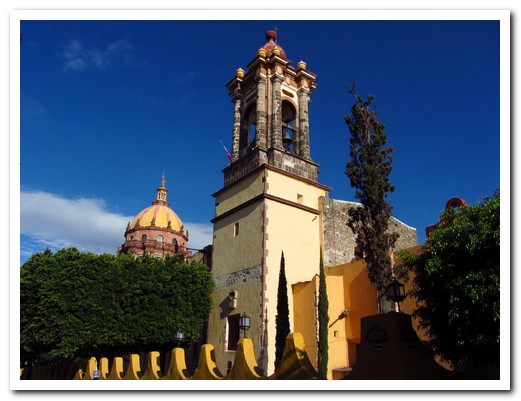
Church
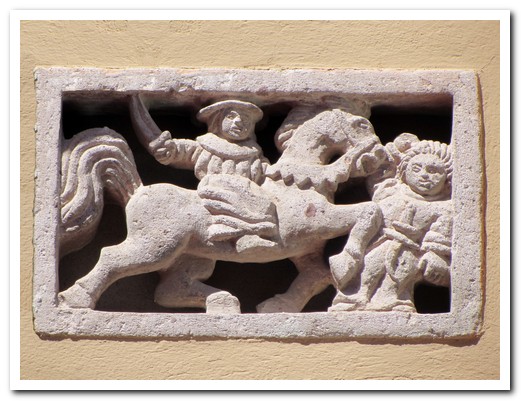
Santiago Matamoros
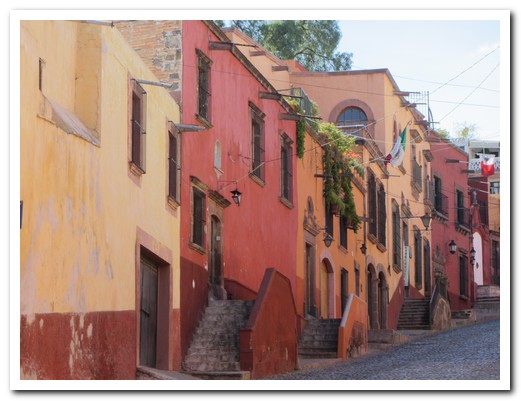
Houses winding up the hill
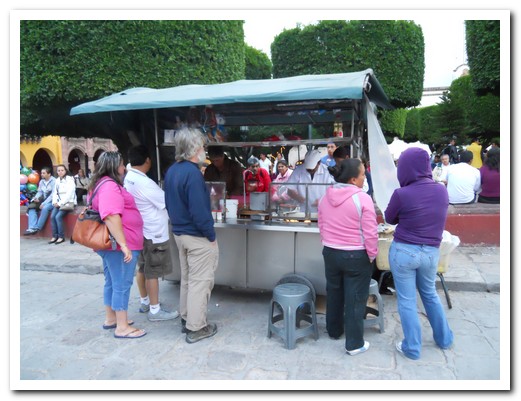
Jeff waits patiently for his hamburger
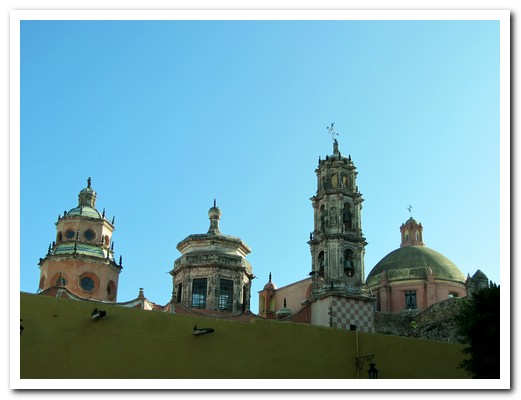
View of church domes
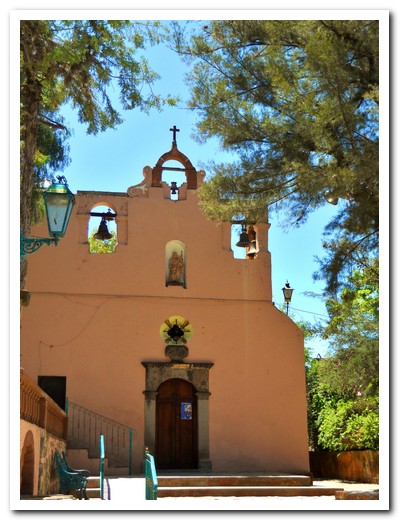
San José chapel
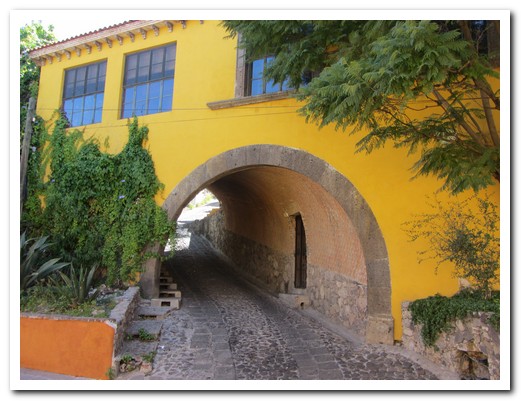
Cobbled street goes right through this house
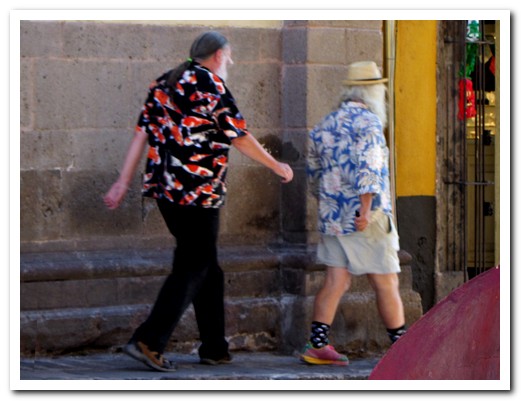
A couple of San Miguel´s expat retirees
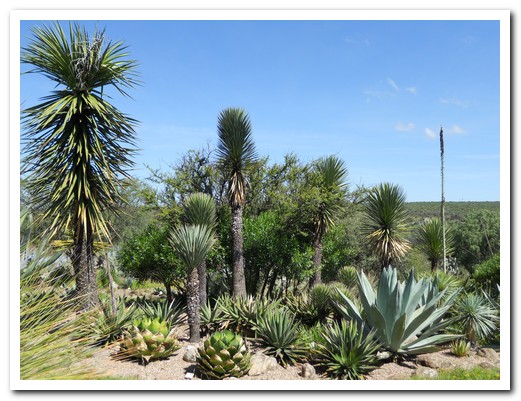
Botanical Gardens on the outskirts of town
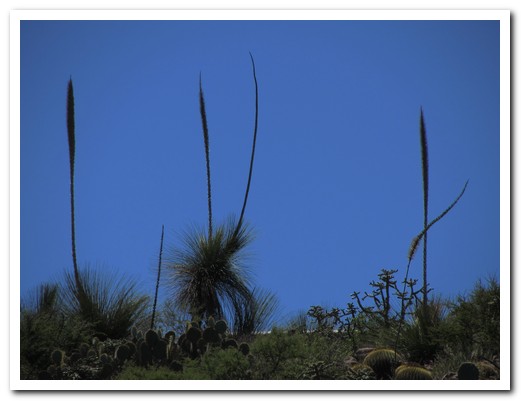
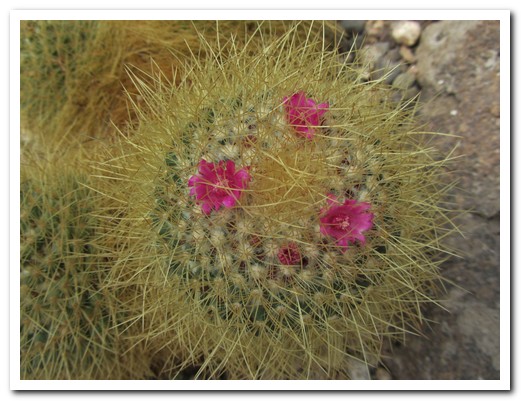
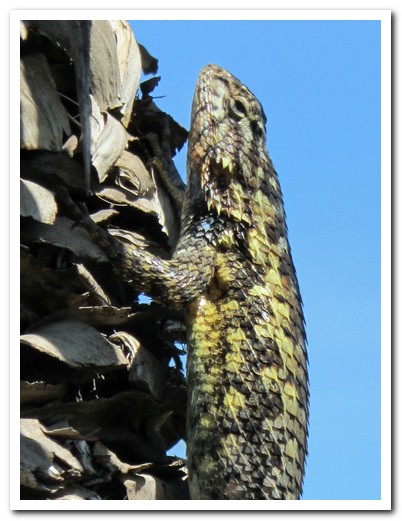
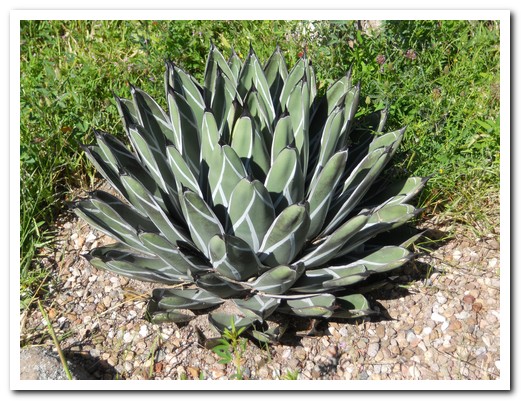

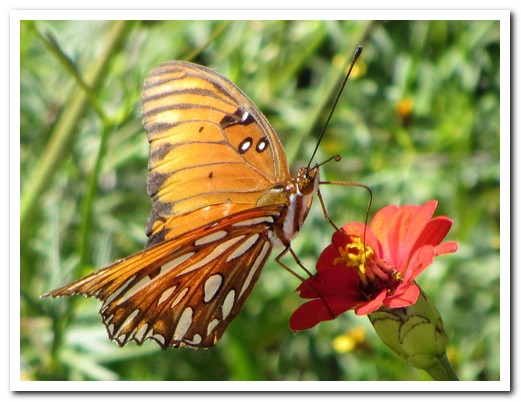
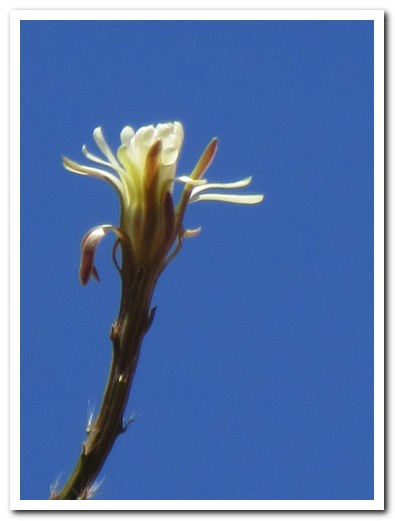
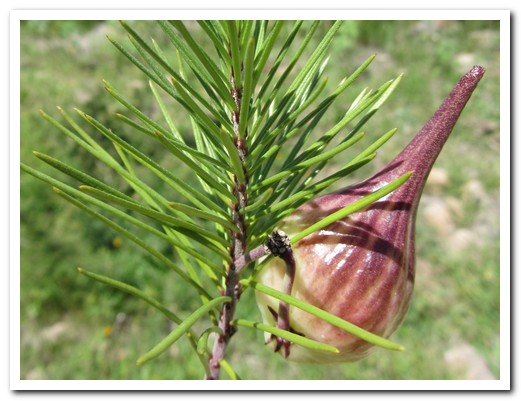
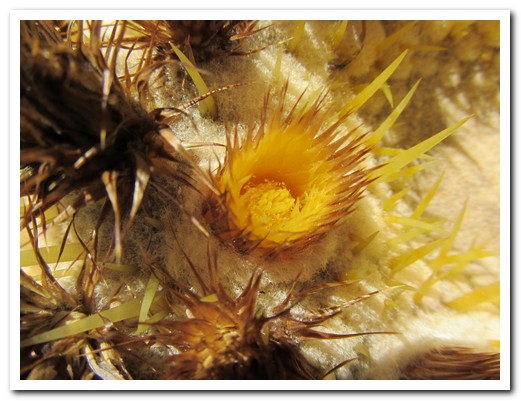
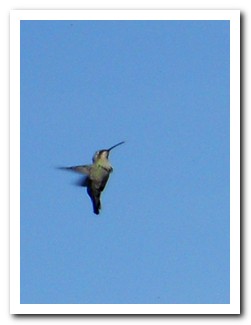 |
 |
| Colibrí – Hummingbird – in action |
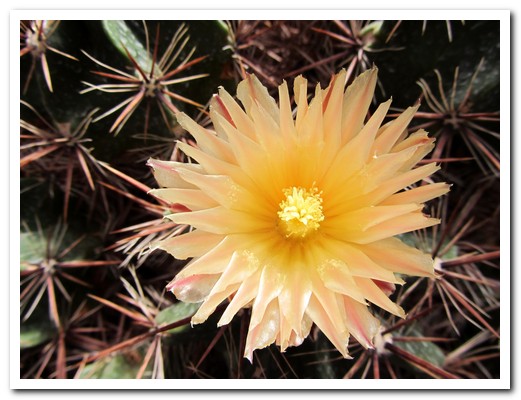
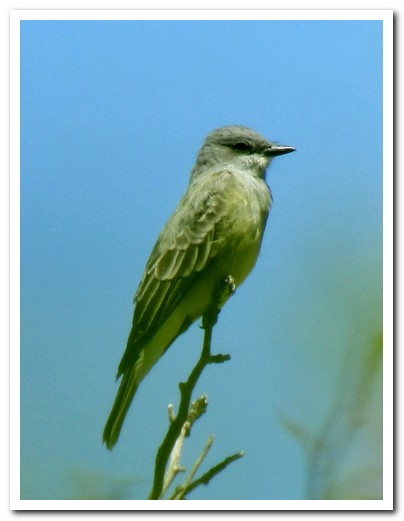
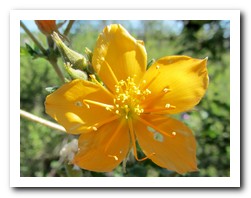 |
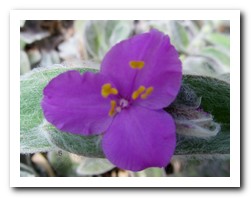 |
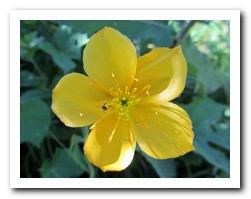 |
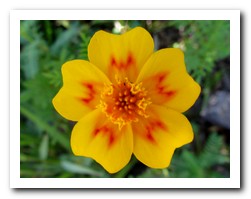 |
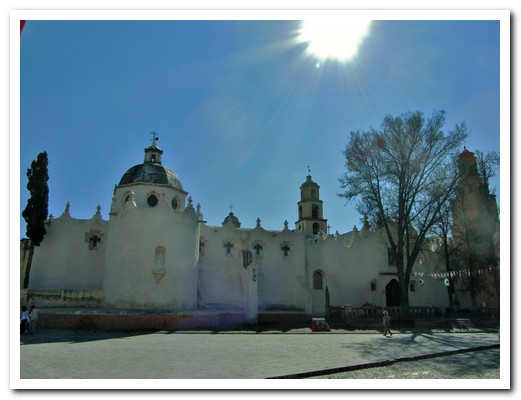
The austere walls of Santuario de Atotonilca ...
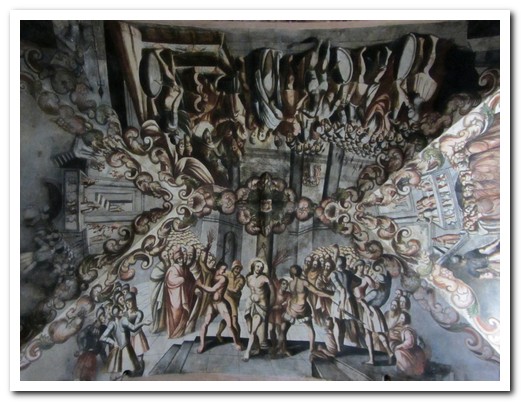
... hide beautifully painted ceilings